
May 23, 2021 | Countries

Chile By Train
A Travel Guide For Train Travel In Chile.
Here you will find information for Chile about trains, routes, tours, connections, where to buy train tickets, and more.

Useful Information
Population: 18 .73 million
Currency: Chilenian Peso
Language: Spanish
Capital: Santiago de Chile
Country code: +56
Time zone: Chile Standard Time (CLT)
Train Companies | Tickets | Rail Passes | Train Types | Routes | Main Stations | Good To Know
Train Companies
The rail network in Chile is operated by the state owned company Empresa de los Ferrocarriles del Estado (EFE) .
Train Tickets

Check timetables and buy your train tickets for Chile online at Grupo EFE.
Rail Passes
There are no rail passes available for Chile.
TrAIN tYPES
- National Trains
Terrasur trains run from Santiago South to Chillán.
- Air-conditioned
- Refreshment car
Frequently Travelled Routes In Chile
International, chile travel routes, main train stations.
- Santiago (Estación Alameda)
- San Fernando
Good to know
Best time to travel to chile.
Chile is a year-round destination but depending on what kinds of activities you enjoy will determine a better time to visit than another. For the best savings, we recommend traveling in the shoulder seasons: autumn (March to May) and spring (September to October), this is when accommodations will be more affordable. The best time for outdoor activities is November to March when the mountains are clear of snow offering up Patagonia as a nature lover’s paradise.
Interested in snow sports? Visit from June to August. Looking toward the north? The capital, valleys, and desert are year-round places to visit and when you want to visit the whole country in one swoop the best month to do so is in March. Love wine? Come during April or May during the harvest season and celebrate Vendimias, celebrated in the lake district, Santiago, and in Valparaiso. And before leaving, don’t forget to witness the best stargazing opportunity in the salt flats from December to February
Chile is truly amazing from spectacular beaches to breathtaking mountains to hundreds of geysers to sprawling vineyards to desert to everything else you’d want to see! Oh and don’t forget about Easter Island! All in all, we promise Chile won’t disappoint!
- High Season: November to February
Accommodation In Chile
The best place to find cheap hotels for is to book by www.booking.com . There you will find a large selection of cheap hotels, hostels, and apartments. > BOOK HERE

Hostelworld
If you are looking for a low budget accommodation, then go on www.hostelworld.com . They have the best choice of cheap hostels for backpackers and low budget travelers. > BOOK HERE

Guidebooks For Chile
Travel with a guidebook ease your journey to find best sights and things to do. Buy it on Amazon.

Back to Top
- Deutsch ( German )
- +56 2 2570 8620
- Contact us!
Transportation

You can travel from Santiago to Chillán in modern and comfortable trains. Terra Sur Company offers differnt trips, in which you can enjoy the southern part of the country. Questions and reservations at www.efe.cl
Taking the TrenCentral from Santiago to Chillán
Travelling on chile’s only "long distance" train.
Chile is the gateway to Patagonia and one of the most developed countries in South America. In the late 19th century Chile's railway experienced its heyday. Today, most lines of the longest country in the world have unfortunately become unusable. The longest – still existing – line runs from the capital Santiago de Chile to Chillán and is operated by TerraSur (formerly also known as EFE). The 400 km long route, includes 10 stops, takes 5 hours and is the fastest option heading South (compared to the bus).
There are also some regional trains and metros, as well as special tourist trains, which run only a few days a year. Soon, new routes will be opened. But more about that when the time comes.
On my way to Patagonia I didn't want to miss the chance to go on a train ride in Chile. In the following lines you can read everything about my experiences, the journey, timetables and what else there is to know. Have fun!
Santiago de Chile
Santiago is the buzzing capital of Chile. In many places it feels almost European. Those who - like me - arrive by plane can enjoy the breathtaking view of the Andes with a window seat. One gets into the city quite simply by taxi - or for those, who like it cheaper, by bus (for the equivalent of €1.80).
For my stay, I picked a private apartment near the train station. It had everything you need to live: a small, well-equipped kitchen, a sofa, a TV, a huge bed, a clean bathroom and even a balcony. The complex also has a swimming pool (perhaps a bit cold in spring) and a gym ("unfortunately" closed during my stay).
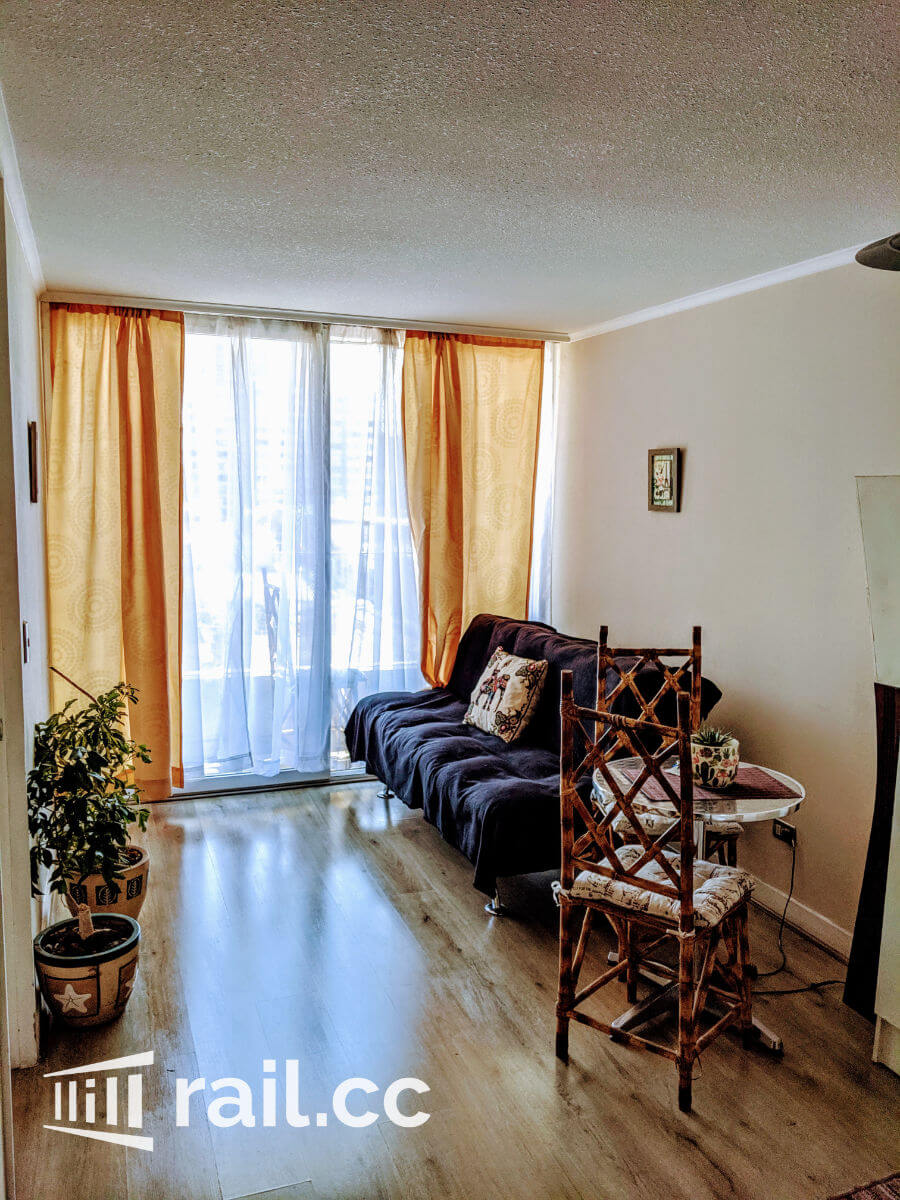
If you want to have a look around the city centre, you can buy a so-called "Bip!"-card at every metro station (by the way, mine was only 20m away from the flat) and top it up with corresponding amounts. The Bellas Artes district is especially beautiful - the metro station has the same name - where you should definitely visit the super cosy "Wonderland"-Café!
Find cheap hotels in Santiago
Tickets, timetables and prices
I bought my ticket online at www.efe.cl without any problems. On their webpage, you can find the connection under "Larga distancia" (=long distance).
The train between Santiago Alameda (that's the name of the main station) and Chillán runs twice a day; once at 8.30 am and at 5.30 pm, with an additional connection on Fridays at 6.25 pm. In the opposite direction, the train runs at 8 am and 3 pm, and on Fridays additionally at 5 pm.
Seats can be easily selected during the booking process, just like the service class (First Class is located at the rear end of the train, which borders the on-board restaurant). In the middle, it is indicated that there is a carriage without windows - which is not true - and belongs to Second Class, just like the carriage in the front of the train.)
Tickets can be purchased either online, at the counter in the station (Mon-Sun 7:30 am to 8 pm) or from the conductor on the train itself. There are two classes of trains, Salón (€15) or Preferente (€28,80).
Departure from Alameda main station
My journey begins at 8.30 am, which is why I generously set my alarm to 7 o'clock. Fortunately, my flat - as mentioned before - is only 2 metro stations away from the main station. The trip there is super easy. After I already spent some days in Santiago using the public transport, I am already in the possession of a so-called "Bip! card", which gives me access to metro and buses. The purchase of this card is already worthwhile after trip number 3 or 4. Those who are only passing through and don't want to buy a card, can either ask a person in the metro to take them with them or simply order a taxi or an Uber to the train station. My ride is more or less relaxed, thankfully it's only two stations – in the morning, the metro unfortunately gets quite cramped.
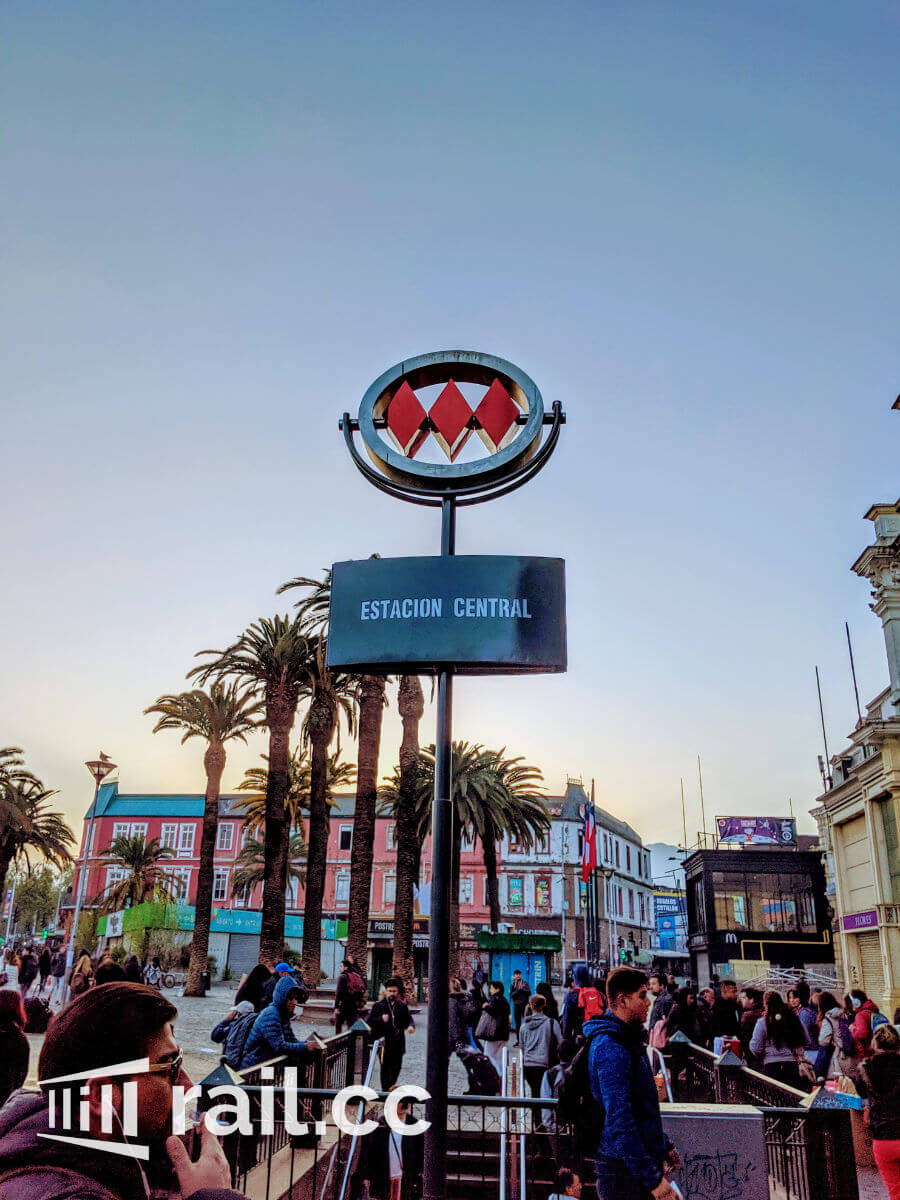
Hundreds of people are scurrying around the main station , possibly on their way to work. Countless street vendors are ready to provide the crowds with all kinds of snacks, drinks, sandwiches, headphones, USB sticks and whatever else you can imagine. I stand in front of the huge station building. Not so much a building, but rather a reception hall. The beautiful steel girder roof construction is reminiscent of the splendour of a glorious past.
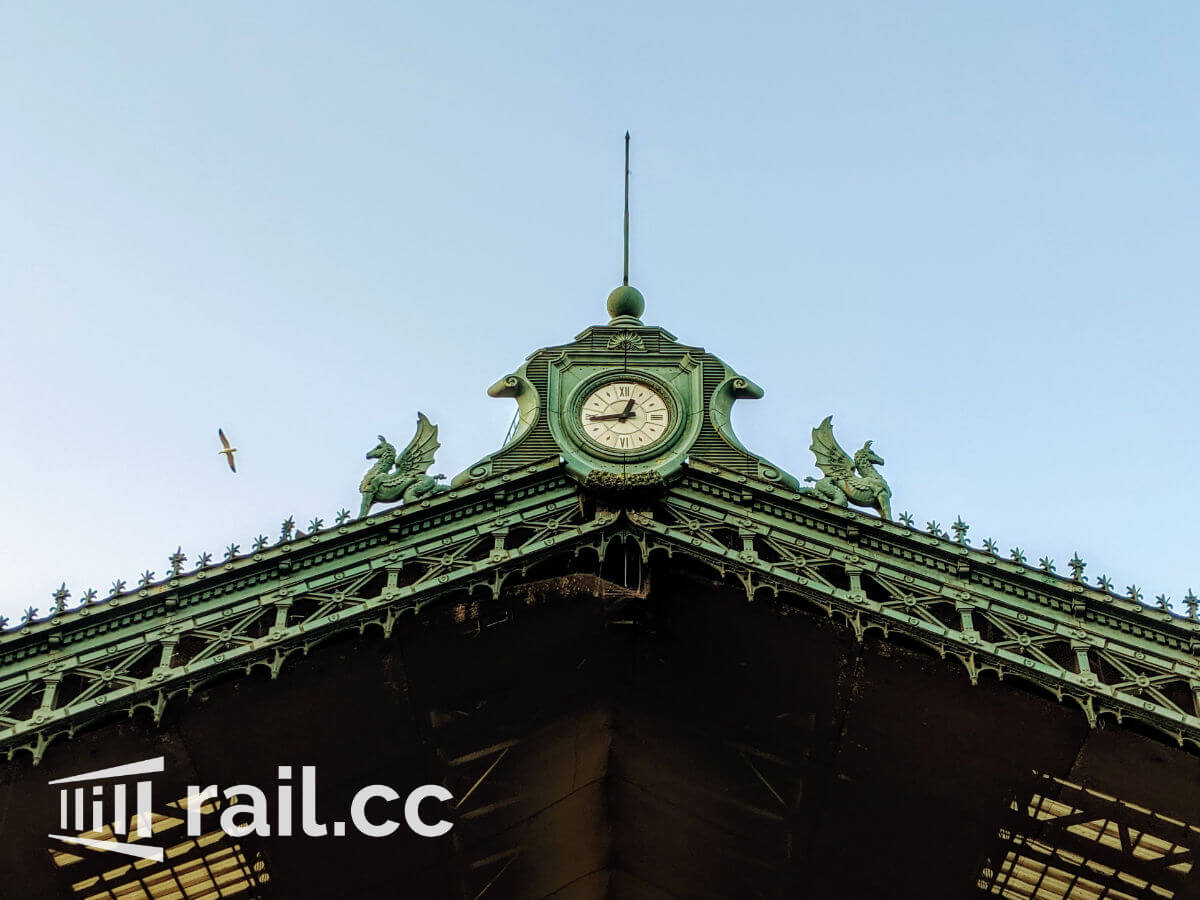
On each side of the hall, there are two large station halls which are used as shopping malls. Unfortunately, the beautiful face of the venerable station is clouded by a rather ugly, centrally placed construction site, which hopefully will be removed soon.
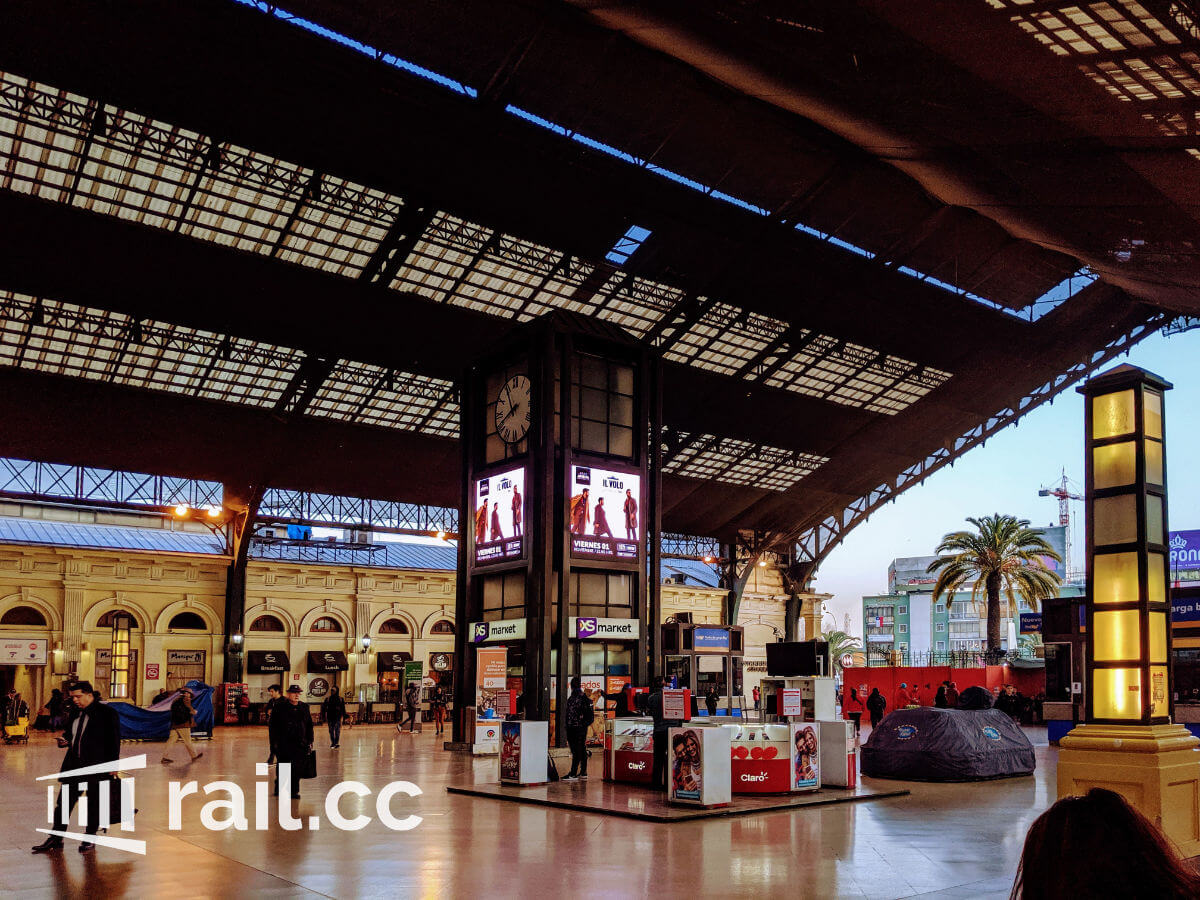
Access to the trains, as well as ticket counters, are located on the other side of the large hall and are very easy to find. The ticket counters are divided into two categories. The left counter is responsible for tickets for the Chillán long-distance train, while the right counter serves passengers on regional routes.

I still have a few minutes to grab an oversized Starbucks cappuccino and ask the lady at the counter, if I should have printed out my online ticket. She says no and points me to my track. Track 1 is located near the other counter on the right and is indicated by a sign ("Salidas/Llegadas Chillán" = arrival/departure Chillán). My train is already waiting there.
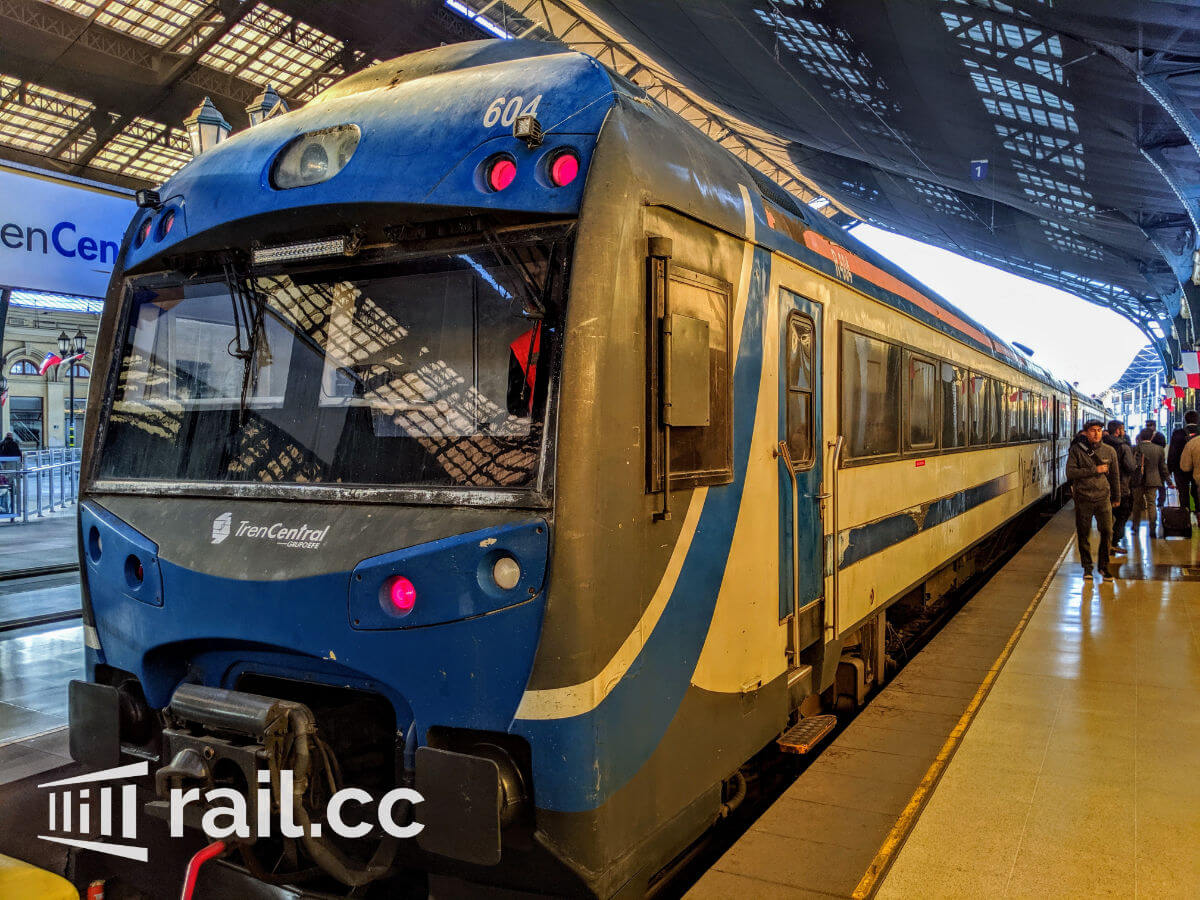
Various small signs about luggage regulations unsettle me. It seems, that only hand luggage is allowed, but I travel with a relatively large 65L backpack... Well, I guess, somebody will say something. I show the ticket on my smartphone to the costumed ladies, who are standing in front of the train entrances, and I am being pointed to wagon 1, where my seat number 52 is located.

First Class, Second Class, Restaurant, Service
When entering the car, it is immediately noticeable that, even though the interior looks quite new, the seats have not seen an update for a long time. They are covered with blue fabric, which is faded and worn. It seems as if they are slightly reclinable, but I don't dare to operate the button foreseen for it. I'm too afraid to destroy the delicate construction. The seats have a pocket to store smaller items, a relatively large folding table including an unusable fold-out cup holder. My table is also broken and lies on my thighs.
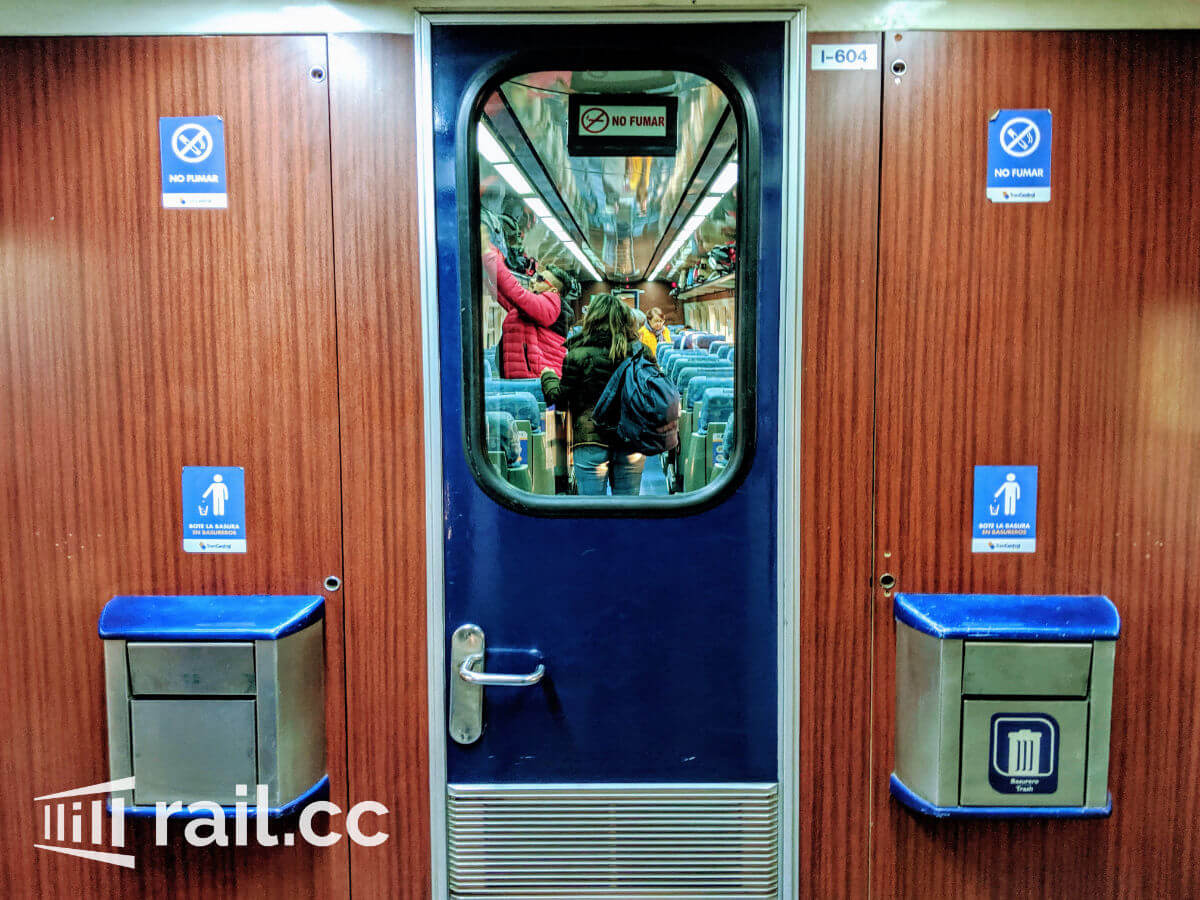
There is not much space for luggage, only a narrow shelf above the seats. I can't find a separate luggage rack in the aisle (but as it turns out later, you can have your luggage stowed for a small fee - read more below). Instead, there is plenty of legroom; sockets, coat hooks and Wi-Fi were unfortunately completely omitted, which limits working to the battery life of my 8-year-old MacBook and the network coverage of my Chilean SIM card. Also, the windows haven't seen a cleaning for a long time, but I don't care about that, because there is no window at my seat (52) anyway.
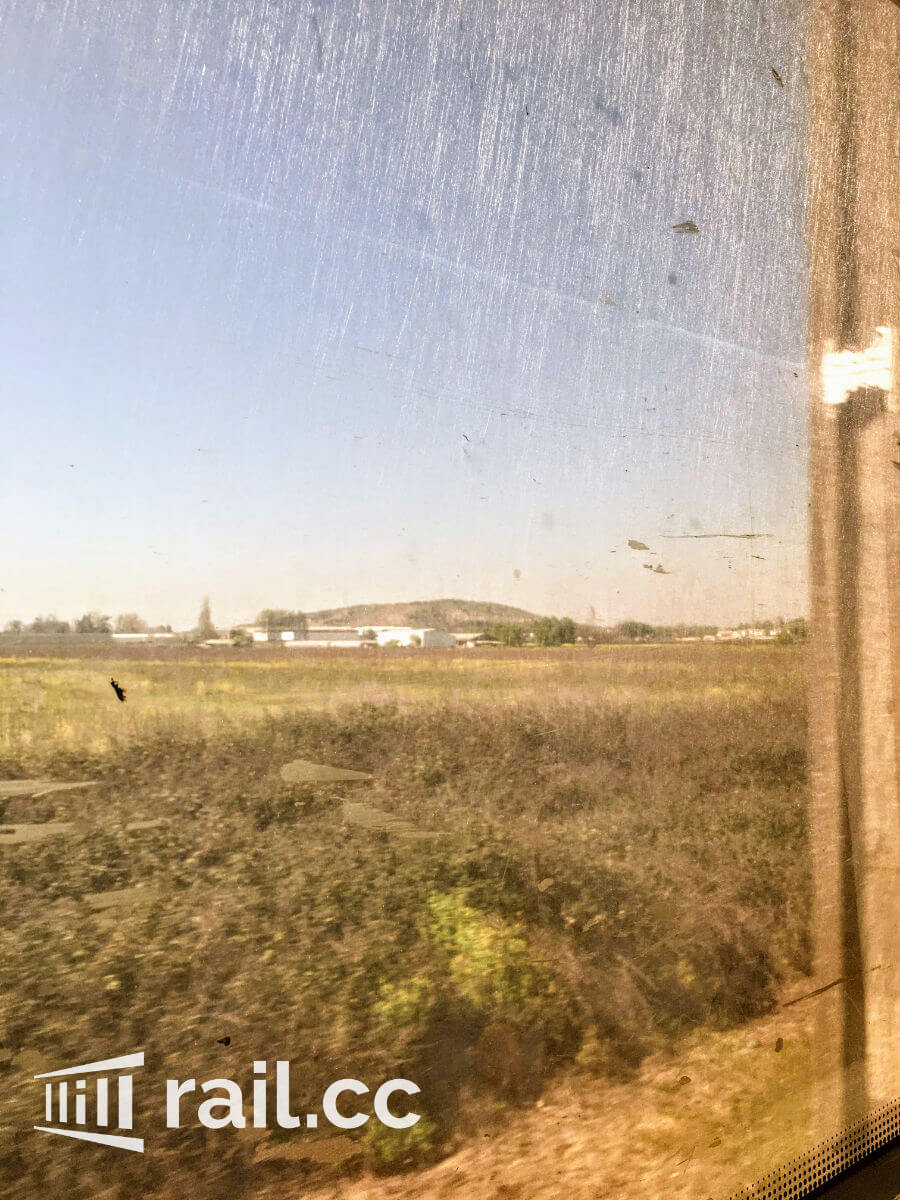
You should therefore try to get a seat with a large table when booking online. Or any seat, other than mine, really. Admittedly, the view from the window is not too breathtaking. The landscape we are crossing feels quite "European". Past vineyards, fields, meadows, streets, often with the distant mountains in the background.

Shortly before the start of my journey, some conductors walk through the train. Since I didn't manage to squeeze my backpack into the undersized luggage rack above the seats, I tried to position it next to me, as space-saving as possible (but it still protruded a little into the corridor). One of the conductors more or less politely points out to me that I should please stow my luggage in the luggage rack. I explain that it's not possible, whereupon she informs me, that there is a luggage room which I can use for 2,000 CLP (approx. €2.50). I agree - but after all, I have no other choice. A middle-aged gentleman promptly hurries to my seat and takes my rucksack, while he explains to me, that a ticket for it will be issued immediately, which I could exchange for my luggage at my destination. Payment will be made later during the ticket control. Well, that's dealt with.
A little later, the conductor comes again, wants to see my ticket and charges my luggage fee. Once we pick up some speed, I decide to have a look around. This happens quite fast, as the train has only 3 wagons. In the third and last car, which also accommodates the First Class, I find the on-board bistro. I only have a quick peek, there are no seats and it is also relatively unkindly arranged and except for a single, waiting person, deserted.
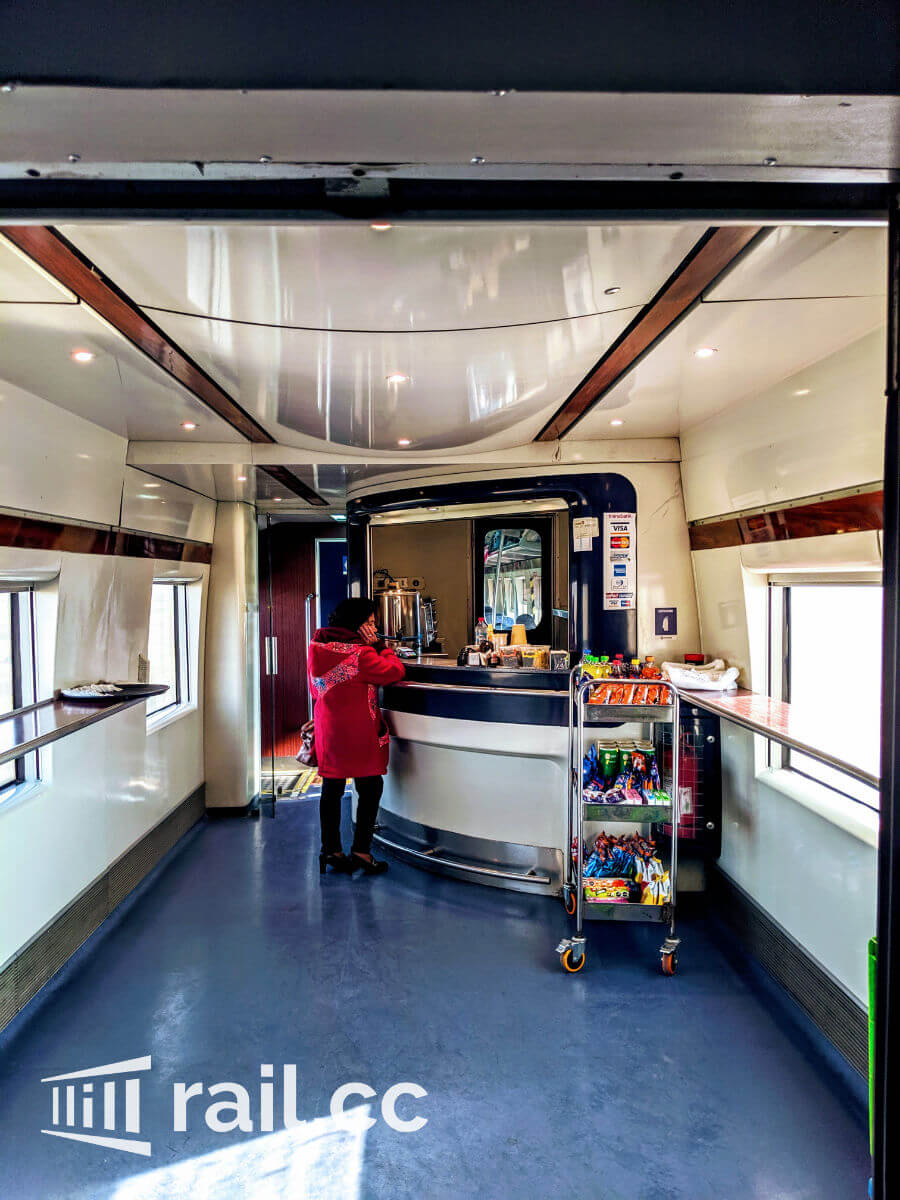
I go back to my windowless seat. Here and there, I run into the man who took care of my luggage. Sometimes, he takes rubbish out of my hands, which I was bringing to the bin, sometimes he mops the corridor, sometimes he brings toilet paper (an exception on "public" toilets in Chile). A nice, friendly gentleman. I guess, he is something like a train janitor.

About halfway down the line, a friendly young man walks through the train and takes orders from the on-board restaurant. There are small snacks, hot and cold drinks. I decide - as always - for a simple coffee for the equivalent of €1.25, which is also paid to the conductor. A little later a Styrofoam cup with hot water and a packet of instant coffee are pressed into my hands. I must have looked pretty surprised... So I mix my transparent-brown brew together and listlessly sip it a few times. Plus points for the service, but deductions in the B-note.
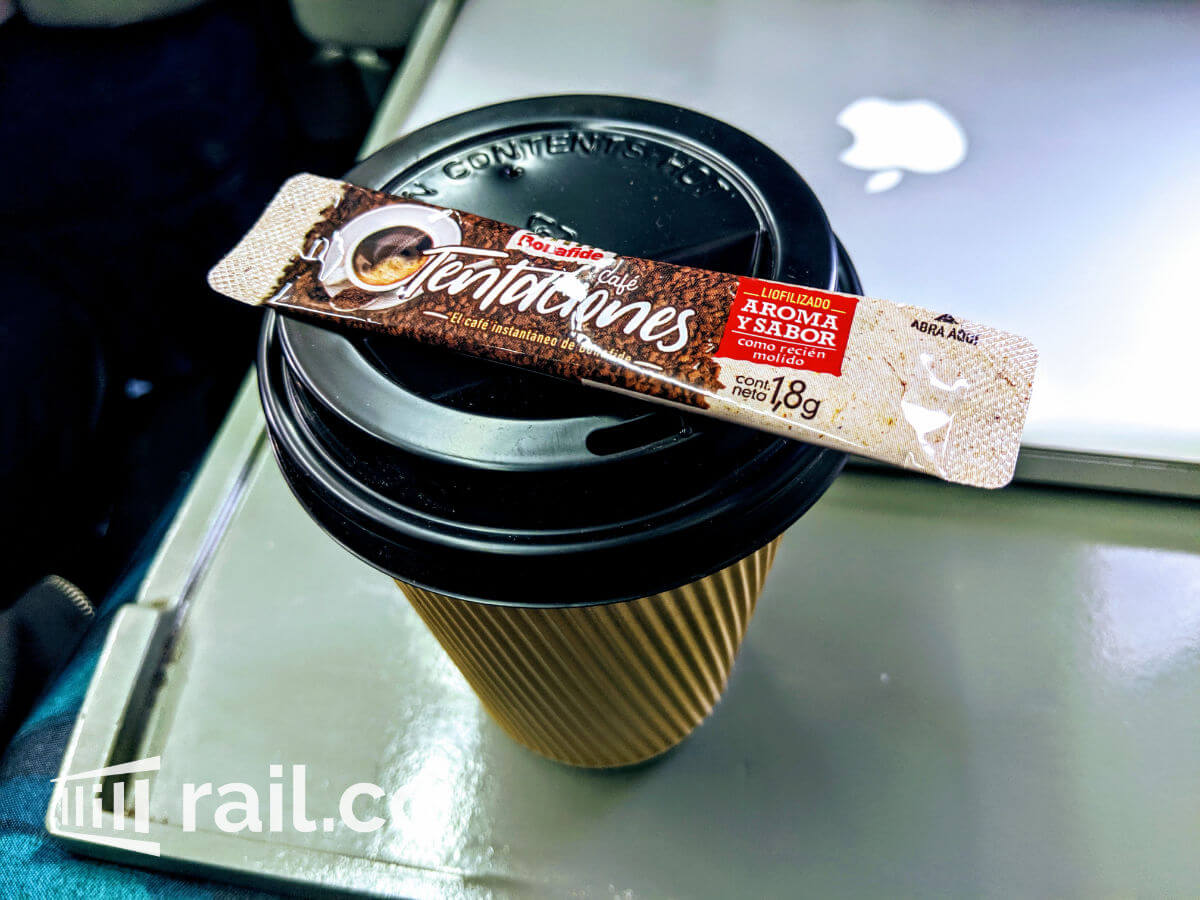
I look at my watch, half the journey time has already passed and I decide to put an end to my miserable (better: non-existent) view, by moving to a free window seat with a clear view. Well. Almost clear, because again, the windows could use a little window cleaner. With some pain and misery, one can look through yellow-brown stains to catch some outside views. After all, the view is quite nice. The Andes rise on the horizon and small settlements, vineyards and agricultural areas pass in front of me. Some cities we pass (by the way with up to 130 km/h) look like they have simply been copy-pasted. One house next to the other, beautiful in rank and file. Each looks like the other and I imagine living there, regularly confusing my own house.

Arrival in Chillán/Continuing to Pucón
The intermediate stops are short and unspectacular, we reach our destination with a delay of 23 minutes. In Chillán all passengers get off the train and begin to gather in the front to exchange their oversized luggage for a small piece of paper. Although the train station in Chillán is fairly small, it has a waiting hall with benches and a ticket counter. A large mural welcomes the arriving passengers. Unfortunately, I am in a hurry, as I don't want to miss my bus to Pucón.
Book cheap hotels in Chillán

I have 25 minutes to get to the bus station, thanks to the delay. So I jump into a taxi whose talkative driver takes me to the correct bus station (there are several ones, depending on your destination). In front of me lie 6 more hours of bus journey, which I bypass with a nap.
Book the bus Chillán to Pucón
Before I finish, I urgently need to say a few words about the beautiful town of Pucón . It is the gateway to Patagonia and is guarded by an impressive snow-capped volcano.
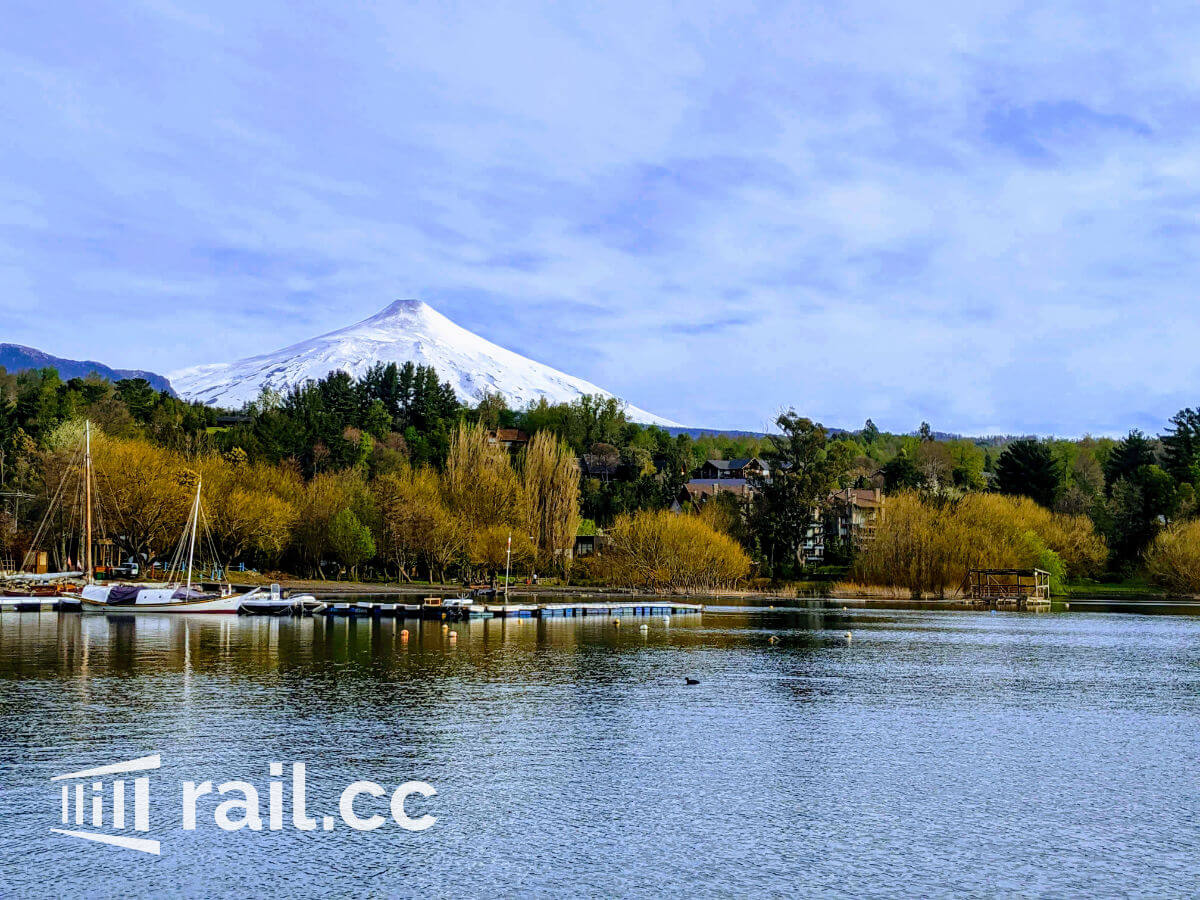
One should definitely consider spending some nights there and visit the Huerquehue National Park. I found shelter in the Hostal Flamingo , which I can warmly recommend to anyone. A stylish, colourful, beautifully furnished hostel, where you can feel at home, with a superbly equipped kitchen and incredibly friendly staff. (The photos speak for themselves)
Find accommodation in Pucón

The train's fast, I'll give it that. However, I had expected a little more. The trains of the TerraSur definitely need a general overhaul. Or at least a thorough window cleaning. Maybe I just had bad luck with my train. With €15 the ticket is relatively cheap and the service is very uncomplicated and friendly as well.
Those who, like me, do not stay overnight in Chillán but continue directly to Pucón should consider, whether it might even be more relaxed to take a bus directly from Santiago to Pucón . Then one won't save oneself any time, but a possibly stressful change. But then, of course, one has to do without train travel.
Anyway, I will still keep my eyes open regarding the Chilean rail network, as the government has announced recently, that some neglected lines will probably go back into operation in the future. Especially a route reopening to Puerto Montt should be interesting for all Patagonia travellers. ;)
Now I would like to release you with a photo of wonderful Patagonia and hope you had fun reading this blog. Thank you very much!
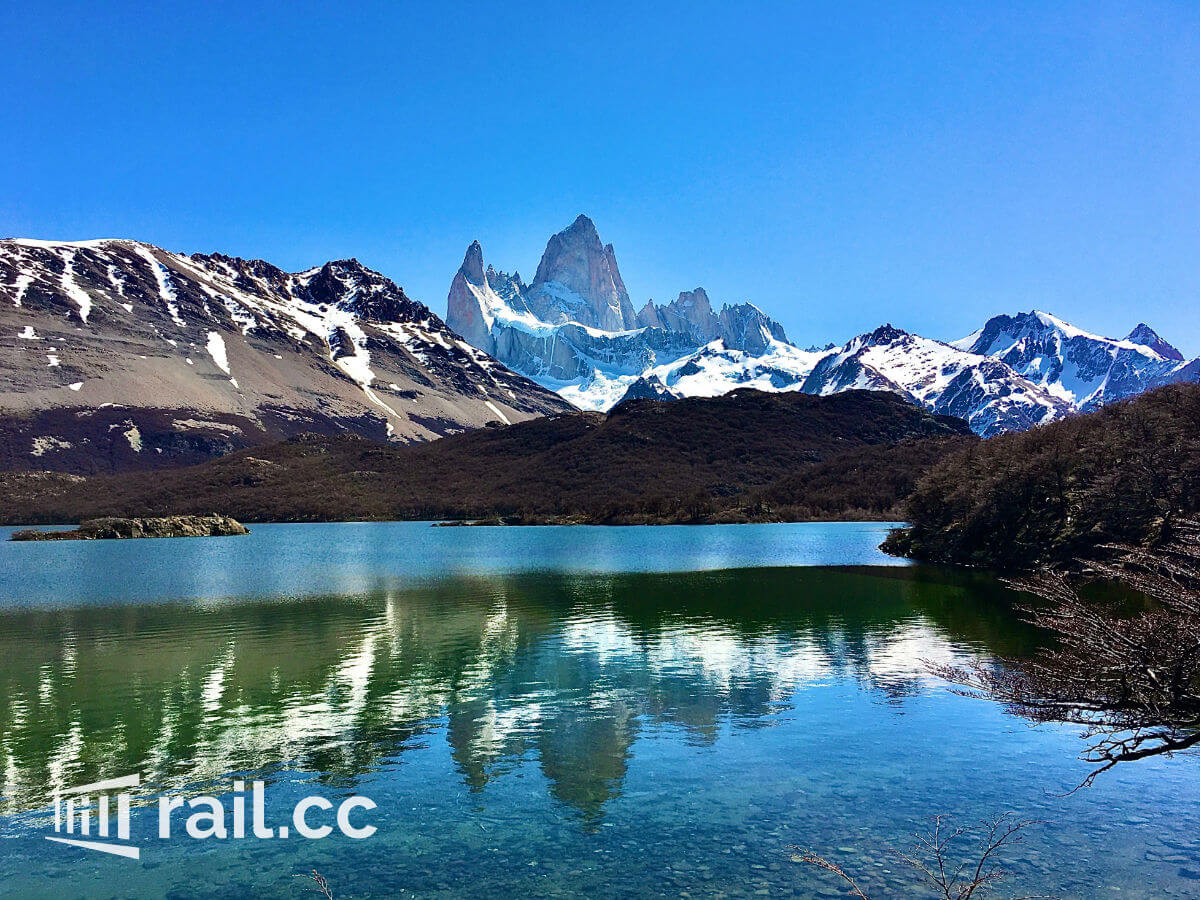
👁 7768
Train Routes
- Bosnia-Herzegovina
- Czech Republic
- Netherlands
- Switzerland
- United Kingdom
ABOUT RAILCC: honest and well-founded tips to help you travel by train.
Train tickets
- search train route
- night train
- train company
Rail passes
- Britrail Pass
- German Rail Pass
- Swiss Travel Pass
- Renfe Spain Pass
- Balkan Flexi Pass
Travel guide
- travel tours
- train types
- train travel in ...
- ferry connections
- bus tickets
- Interrail Global Pass
- Interrail One Country Pass
- first time Interrail
- how to Interrail
- Interrail train reservations
- Interrail night trains
- Interrail ferries
- Interrail buses
- Interrail country overview
- Interrail offers and discounts
- Eurail Global Pass
- Eurail Select Pass
- Eurail ONE Country Pass
- how to Eurail
- first time Eurail
- Eurail train reservations
- Eurail night trains
- Eurail ferries
- Eurail buses
- Eurail in ...
- Eurail offers and discounts
- about railcc
Available in over 30 languages
Follow rail.cc
rail.cc is partner and friend of


🇨🇱 All Aboard Chile's "Ultimo Ramal": A Journey Through Time and Stunning Scenery
Are you ready for a train adventure unlike any other? Step back in time and experience the magic of Chile's "Ultimo Ramal" (The Last Branch Line), a railway journey that winds through captivating landscapes, rich history, and the heart of the Maule region.
Why the Ultimo Ramal is a Must-Do:
- Scenic Splendor: Follow the Maule River's curves, marvel at rolling hills, and soak in the vibrant colors of the Chilean countryside. The views are simply breathtaking.
- Historical Charm: Ride aboard vintage "Buscarrils" (buses on rails) from the 1960s, adding a nostalgic touch to your journey.

- Engineering Marvel: Cross the iconic "Banco de Arena Bridge," designed by none other than Gustave Eiffel, the mastermind behind the Eiffel Tower.
- Unique Experience: This is Chile's last remaining non-electrified, meter-gauge railway line still in service for passengers – a true treasure!
A Glimpse into the Past
The Ultimo Ramal's story began in 1892, and its legacy lives on. Learn about its fascinating history, including the challenges it faced after the 2010 earthquake and its triumphant return. Discover the Gonzalez Bastías Railway Station, a railfan's paradise with its collection of old rail vehicles.

How to Experience the Ultimo Ramal:
- Starting Point: Begin your journey in Talca, easily accessible by train from Santiago.
- Duration: The ride from Talca to Constitución takes approximately three hours.
- Travel Tips: Book your tickets in advance, especially during peak seasons.
- Join Our Adventure: Consider joining our "Patagonian Rail & Cruise Tour" from 11 October - 1 November 2024, where you'll experience the Ultimo Ramal firsthand.

The Ultimo Ramal Awaits:
Whether you're a history buff, a nature lover, or simply seeking a unique travel experience, the Ultimo Ramal will leave you with cherished memories. Don't miss the chance to ride this historic railway and discover the hidden gems of the Maule region.

Sounds interesting? Then check out these tours I organize:

Rail South America hosts world-class small-group tours utilizing rail travel whenever possible to discover the most renowned, unique, and unforgettable destinations in South America.
- Free E-Book
- Advertise with us
SantiagoChile.com The Ultimate Guide to Santiago – for Residents & Visitors

Taking the Train from Santiago
Abigail Dantes September 30, 2014 Transportation 11,068 Views
Train – Santiago Chile
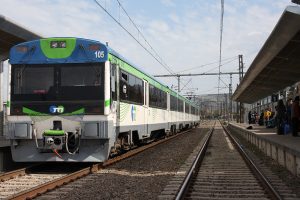
If you find yourself in need to take the train from Santiago don´t be intimidated by it, this is definitely an easy task. However, do have in mind that is very likely staff at the train station, and on the train itself, won´t be able to communicate with you in English at a proficient level. The good thing is that, in general, they are helpful and make the effort to meet your needs.
Unfortunately in Chile the trains only travel through a very short length of the country, that being the stretch: Santiago – Chillán. Between these two destinations there are 10 stops, but these do not make the journey slower than that on the bus. In fact, in Chile, many prefer to travel by train. The list of reasons for that may begin at how different the train and bus stations are from each other; the former being a much calmer, cleaner and straight-forward environment. The train is also renowned for consistently obeying the schedule, and although the bathrooms can often be quite dirty, overall all the facilities are clean.
Whenever purchasing your train ticket online, ( http://www.tmsa.cl/link.cgi/servicios/terrasureng/ ) the options on the departure drop down menu might be a little confusing if you are leaving from Santiago. When in this situation, the option you want is Alameda , which is the very place where the trains departure from. The final step of your purchase is to pay for your ticket via WebPay; now, if you are in luck it will work sooner than later, but this is not really the case most of the times. The best thing to do is to keep trying, it will work eventually. Otherwise, the only option left is to buy the tickets at the Alameda office at Estación Central – open every day from 08:00 to 20:00 hours , or at the Terrasur ticket booth at Universidade de Chile metro station – open from Monday to Friday from 09:00 to 20:00 hours, and on Saturdays from 09:00 to 14:00 hours.
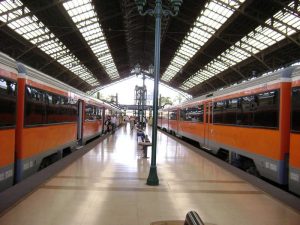
Prices range from CLP7,000 to CLP24,000 depending on the season, length of the journey and or which carriage you wish to travel. They basically follow two standards: Clase Preferent e (first class), where seats are considerably wider, more comfortable and far apart from one another, in addition each seat has its own electric socket; and Clase Salón (Economic), with narrower seats, which are greater in number, causing these carriages to be more crowded and often quite noisy as a consequence of all the kids on board. The train also provides a modest cafeteria service; you can either order/buy your snack as the waiter passes by with a snack trolley, or order at the carriage where they prepare the coffee and toasties.
There is a transportation fee of CLP2,000 for suitcases and boxes which will not fit in the hand-luggage compartment, and the fee for transporting mountain bikes, skies/snowboards and pets is CLP3,000.
The trains leave from Alameda , located in Estación Central (also known as Estación Alameda ), this is a bustling building in a bustling neighbourhood. When walking around here be very aware of your belongings at all times, thievery thrives in this area all day long. The best way to arrive there is to take the Linea 1 (the red line) of the metro grid line and head to the station of same name, there you will also find supermarkets, ATM machines, coffee bars, souvenir shops, newsagents etc.
Travelling by train in Chile is definitely something to consider doing. The journey itself is safe and pleasant; the views of the rural areas and cities´ backdrop provide an interesting insight of how varied Chile is when it comes to nature, infrastructure and wealth. Plus, it is most likely that your destination is going to be the stunning mountains in Termas de Chillán or the beautiful vineyards at Valle Colchagua ; making the decision of taking the train from Santiago all the more worth it.
Article by: Abigail Dantes
About Abigail Dantes
Related Articles
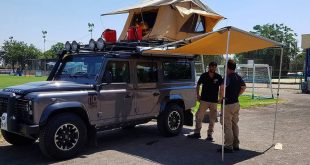
How to buy a car in Chile
May 30, 2017
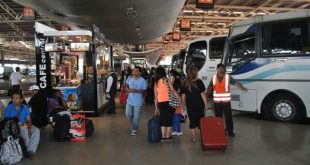
San Borja Bus Terminal
September 10, 2015

January 27, 2015

Chile Travel Guide
Last Updated: September 3, 2024
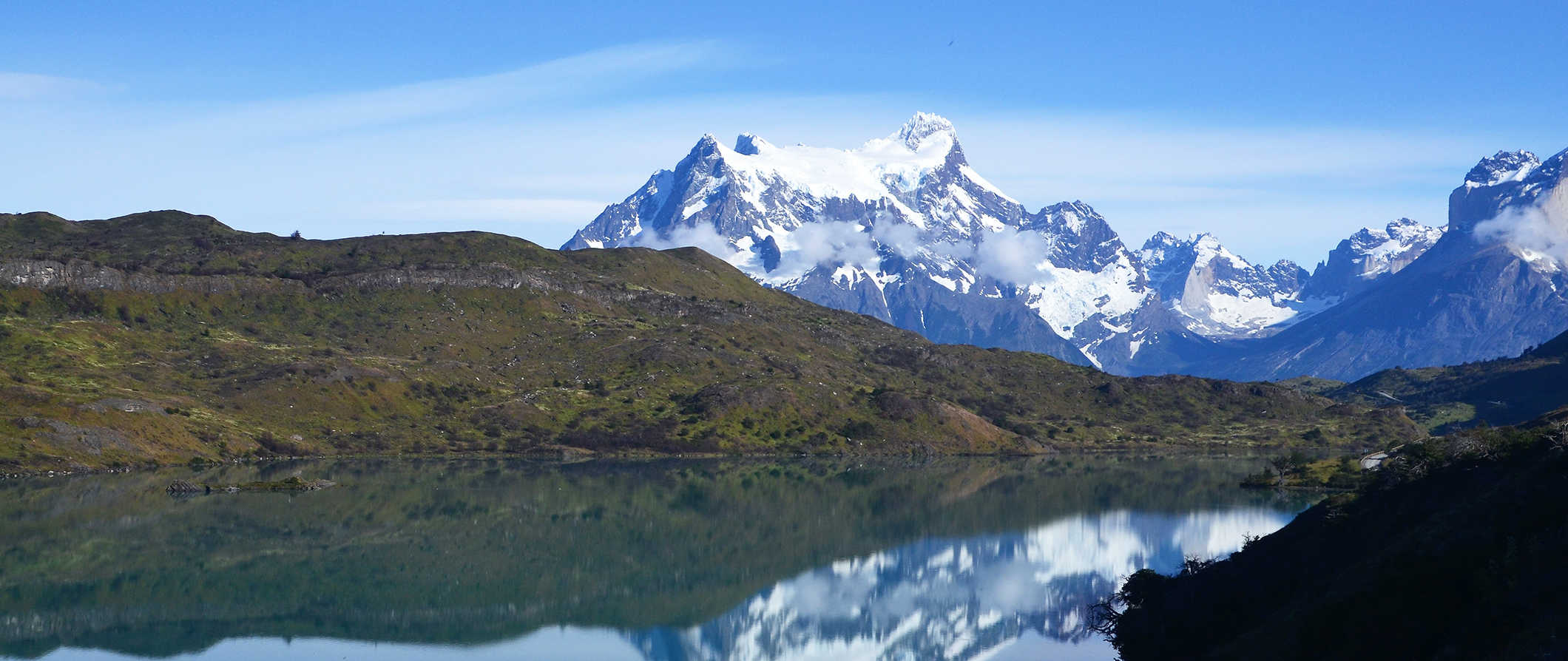
Chile is one of the most slender and longest countries in the world — it’s just 150 miles across at its widest point! From the snow-capped volcanoes of Patagonia and blistering heights of the Andes to world-class wineries and Maoi sculptures of Easter Island , there are a lot of wonderful things to see in Chile.
Traveling to Chile was one of the best experiences I’ve had in South America. It just constantly blew me away. It’s one of the most developed South American countries (the capital, Santiago, is a tech hub for the region), the people were awesome, the food was incredible, and the scenery made me feel in awe of nature.
Not only is there lots to do but the country is budget-friendly, which really rounds it out as a must-see destination.
Use this travel guide to Chile to plan your visit, save money, and make the most out of your trip!
Table of Contents
- Things to See and Do
- How to Stay Safe
- Where to Stay
- Typical Costs
- Suggested Budget
- Money-Saving Tips
- How to Get Around
- Best Places to Book Your Trip
- Related Blogs on Chile
Click Here for City Guides
Top 5 things to see and do in chile.
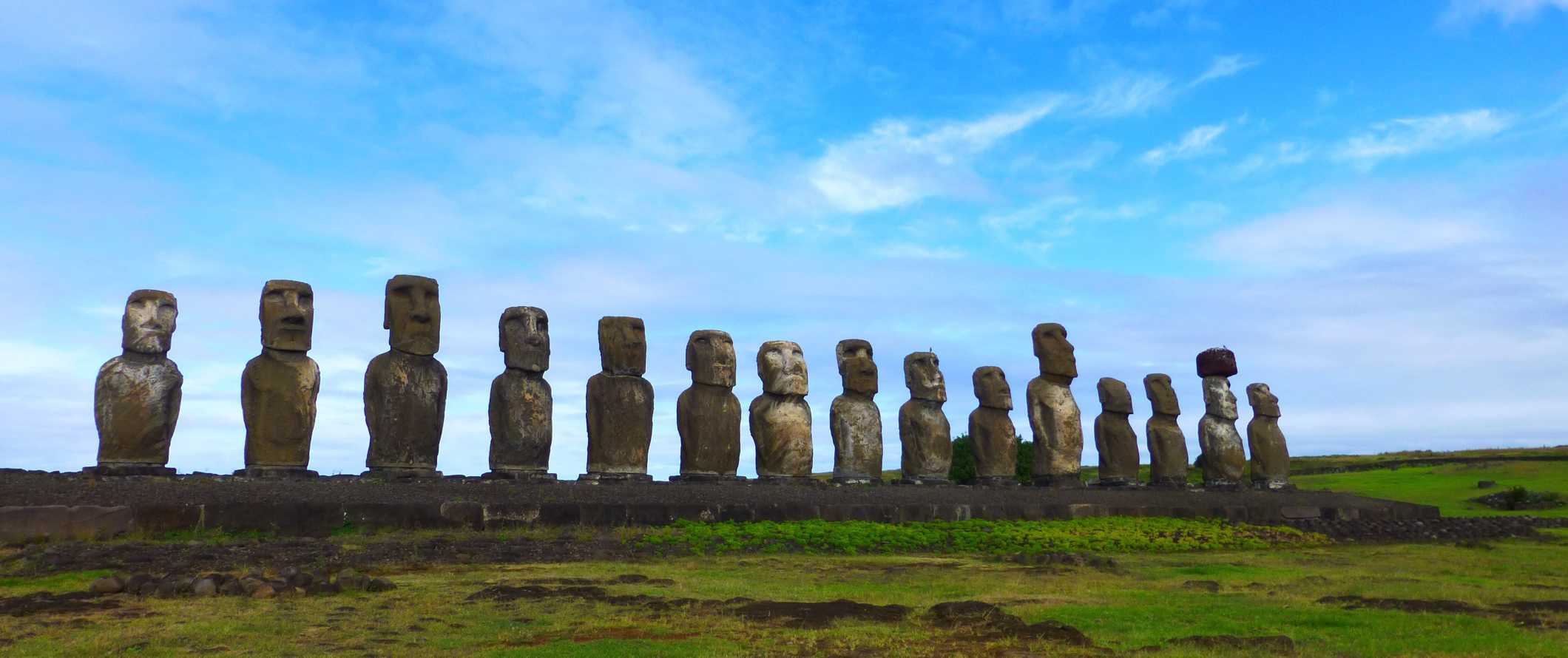
1. See Easter Island
Easter Island, located 3,540 kilometers (2,200 miles) off the coast of Chile, is the most isolated inhabited island on earth and home to the Rapa Nui Polynesian indigenous people that have lived there since 300 CE. Named after explorer Jacob Roggeveen’s ‘discovery’ of the island on Easter Sunday in 1722, this protected UNESCO World Heritage Site is famous for its Moai sculptures (the iconic big faces dotted all over the island). However, there is so much more to the island, including thousands of archaeological sites, volcanic craters and tunnels, pristine beaches, and excellent diving. To explore this magical place, hike around the dramatic cliffs and extinct volcanoes around the Moai archeological sites or around the spectacular Rano Kau crater and the Ana O Keke Cave. Or go sun yourself on Anakena’s beautiful white coral sand beach or Ovahe, a secluded pink sand beach hidden in a little cove with sparkling turquoise waters.
2. Discover Torres del Paine National Park
Torres del Paine lies between the Andes and Patagonian steppe and is made up of snow-clad mountains, glacier lakes, and some of the best hiking in Chile. It also happens to be one of the most beautiful and desolate regions on the planet. There is no end to the scenic views here, including the three rugged, towering peaks of Central, Monzino, and Dagostini as well as the Southern Ice Fields. Be sure to wander around the enchanting Sarmiento Lake and see the Amarga Lagoon and the giant Salto Grande Waterfall. Admission is 29,250 CLP for up to three days for foreigners.
3. Explore Santiago
Chile’s capital is a thriving city and home to a third of the country’s entire population. Founded in 1541, this vibrant capital offers gorgeous panoramas, great restaurants, tasty locally-produced wine, and of course, Barrio Bellavista’s nightlife. There are quite a few must-see attractions in the city: Parque Metropolitano (a large urban park) as well as Cerro San Cristóbal, where you can hike around taking in beautiful views of the city, shouldn’t be missed. The Museum of Human Rights is also a must-visit site, as it chronicles the dark years of Pinochet when thousands of people ‘disappeared’ at the hands of his violent regime.
4. Marvel at San Pedro de Atacama
Located in Chile’s Norte Chico northern region, San Pedro de Atacama is one of Chile’s hottest tourist towns. Literally. Sitting at 2,400 meters (7,874 feet), the ancient town is in the driest desert in the world (it reportedly hasn’t seen rain since 1870). But the rock formations here are stunning, and it’s the perfect place to stargaze. This little town with adobe houses and dirt streets only has 5,000 inhabitants but plenty of tourists visit up to explore the stunning valley landscapes, the Atacama Salt Flats, and the Chaxa and Miniques Lagoons. Don’t miss the famous beautiful jagged geological formations of Valle de la Luna and Valle de la Muerte valleys that can be reached by bicycle from town.
5. Visit colorful Valparaiso
Nicknamed the “Jewel of South America,” this colorful city near Santiago is a mesh of bohemian bars and Victorian architecture along a coastline of sheer cliffs. The laid-back atmosphere and beauty of the area have inspired generations of writers and poets, including poet Pablo Neruda. Be sure to bring your camera because the whole city is painted in vibrant Insta-worthy colors. Take the Ascensor Reina Victoria funicular up to the Concepcion neighborhood and have a cocktail on the hilltop overlooking the city as you try some of the delicious local seafood dishes. Also, be sure to check out two of Chile’s top beaches nearby, the upscale Viña del Mar and the super cool Reñaca.
Other Things to See and Do in Chile
1. see the san marcos cathedral.
The same architect who was responsible for the Eiffel Tower, Alexandre Gustav Eiffel, designed San Marcos Cathedral. The cathedral is in Arica, Chile’s northernmost city, and was built to replace the original cathedral destroyed by an earthquake in 1868. The new cathedral was commissioned in 1876 and is a rare example of Gothic architecture in South America.
2. Get tipsy on a wine tour
Chile’s vineyards have been producing world-class wine for over 400 years. There are plenty of tours available around the country as vineyards stretch the entire length of Chile. I think the best wineries are located near Santiago. Expect to pay around 15,000-20,000 CLP for a basic tour, though fancier tours at more prestigious vineyards can easily be over 55,000-100,000 CLP per person. Most tours last 4-8 hours.
3. Hike a volcano
Chile is home to the world’s tallest active volcano, Ojos del Salado, which lies in the Andes near the Argentine border. Villarica and Osorno are also popular volcanoes (and both lie close to lakes). Most volcanoes in the country have thermal spas at their base too. Experienced hikers can do the trip on their own, though there are plenty of guided tours available for travelers looking for a group tour. Most multi-day tours span 10-14 days and cost millions of pesos. For day trips like the Cajon de Maipo, Osorno Volcano, Termas Colina, and Petrohue Falls, expect to pay 32,000-56,000 CLP per person.
4. Valle de la Muerte
Also known as “Death Valley,” this is an astounding place to hike, go horseback riding, or even go sandboarding. Located in the northeast of the country near San Pedro de Atacama, there are also guided moonlight walks that take you out over the rocky martian landscape. You can rent a sandboard for around 8,300 CLP or go on a sandboard tour for 23,000 CLP per person which includes transportation. There are even tours that sandboard at midnight, using spotlights to light the way (they have a DJ too!). If you’re looking to hike, check out the Corniza Trail. It’s a 7-hour loop that’s relatively easy (many families do it).
5. Santuario de la Naturaleza Valle de la Luna
Also located near San Pedro de Atacama, the “Valley of the Moon” is an otherworldly landscape that is home to stones and sand formations that have developed an extraordinary texture due to thousands of years of winds and flooding. The rock formations look like the surface of the moon, hence the park’s name. It’s a great place to go hiking — just don’t forget to bring water as it can get quite warm. Tours are available for around 26,000 CLP per person.

6. See the El Tatio geysers
A popular tourist attraction, these geysers are incredibly beautiful and well worth a visit as they make up the largest geyser field in the Southern Hemisphere (and they are the third largest in the world). You have to get up around 4am as all the tour companies aim to get you there by sunrise and it’s a 90-minute drive from San Pedro de Atacama. But it’s worth the effort! Bring a swimsuit as there are thermal pools nearby. Tours cost around 33,000-38,000 CLP. You can visit without a tour (admission is 15,000 CLP) but you’ll need to rent your own vehicle to get there.
7. Museo de Bellas Artes
This museum is one of the best in the country. Located in Santiago, it’s home to a wide display of fine art, sculptures, photography, paintings, and digital media. Built in 1910, the building is somewhat small but the architecture is equally as impressive as the collection within (it was built in the Beaux-arts style and has a very Parisian feel to it). Admission is free.
8. Mingle among the wealthy in Viña del Mar
Considered a Chilean Miami, this city next to Valparaiso serves as a hotspot for casinos, upscale cafes, and seaside restaurants. Even if you don’t have money to burn, it’s an interesting place to spend an afternoon people-watching as you wander the beach promenade. You’ll find lots of world-class restaurants here. If you’ve got some money to burn, stay a night!
9. Tour Pablo Neruda’s homes
One of the world’s most famous poets used to call Chile home. With homes in Valparaiso, Santiago, and Isla Negra, this Chilean icon stuffed a lifetime of knick-knacks, literature, and interesting maritime architectural pieces into his three abodes. All of them are open to the public. Even if you’re not a huge fan of his work, his homes alone are an interesting glimpse into Chilean culture as Neruda is a cultural icon and one of the most famous poets of the 20th century. Admission to each home costs around 7,000 CLP and includes an audio-guide system in multiple languages.
10. Get off the beaten path
Some lesser-known treasures worth visiting in Chile are Frutillar (a beautiful lakeside community in southern Chile’s Los Lagos Region), Lonquimay (another gorgeous lakeside town in the Malleco Province of southern Chile’s Araucanía Region), Caleta Tortel (a rugged seaside town with wooden walkways instead of streets in the heart of Patagonia) and Coyhaique (a less pricey Northern Patagonia city that’s a hub for great nature adventures). If you’re looking to beat the crowds, be sure to visit some of these lesser-known destinations.
11. Swim in the world’s largest pool
If you’re looking for some luxury, head to the Crystal Lagoon, home to the world’s largest swimming pool. It’s located at the San Alfonso del Mar resort in Algarrobo, just west of Santiago. The pool is the size of twenty Olympic swimming pools and is the biggest recreational swimming pool in the world, requiring 66 million gallons of water just to fill it! A 1-2 bedroom apartment rental here costs 70,000-120,000 CLP per night.
How to Stay Safe in Chile
Chile is considered a safe destination and generally ranks as one of the safest on the continent. That said, crimes still do occur so you’ll want to take some precautions during your trip. The most common crimes in Chile are petty theft and bag snatching. Since these are crimes of opportunity, you’ll always want to make sure your possessions are secure. Be extra vigilant when riding the bus and when you’re in areas popular with tourists.
When taking the bus (especially the night bus) make sure you don’t have any valuables in your checked bag. Additionally, keep any valuables secure and out of reach from any would-be pickpockets.
If you’re enjoying the nightlife of Santiago, keep an eye on your drink as drink-spiking can occur.
Be sure to read about the common travel scams to avoid here .
Earthquakes are also common enough in Chile that you’ll want to make sure you are prepared should one occur. Know where your emergency exits are in your accommodation as well as any local evacuation locations for major emergencies. If you have a map downloaded on your phone, save the location of the nearest hospital and airport as well, just in case.
If you need emergency services, dial 113 for assistance.
The most important piece of advice I can offer is to purchase good travel insurance. Travel insurance will protect you against illness, injury, theft, and cancellations. It’s comprehensive protection in case anything goes wrong. I never go on a trip without it as I’ve had to use it many times in the past. You can use the widget below to find the policy right for you:
Where to Stay in Chile
Hostels can be found in all the major destinations across Chile. Here are my recommended places to stay if you’re on a budget:
- Chili Kiwi Lakefront (Pucon)
- Hostal Forestal (Santiago)
- Poker Hostel (Santiago)
- Hostal Po (Valparaiso)
- Hostal Rural (San Pedro de Atacama)
- Kona Tau (Easter Island)
Chile Travel Costs
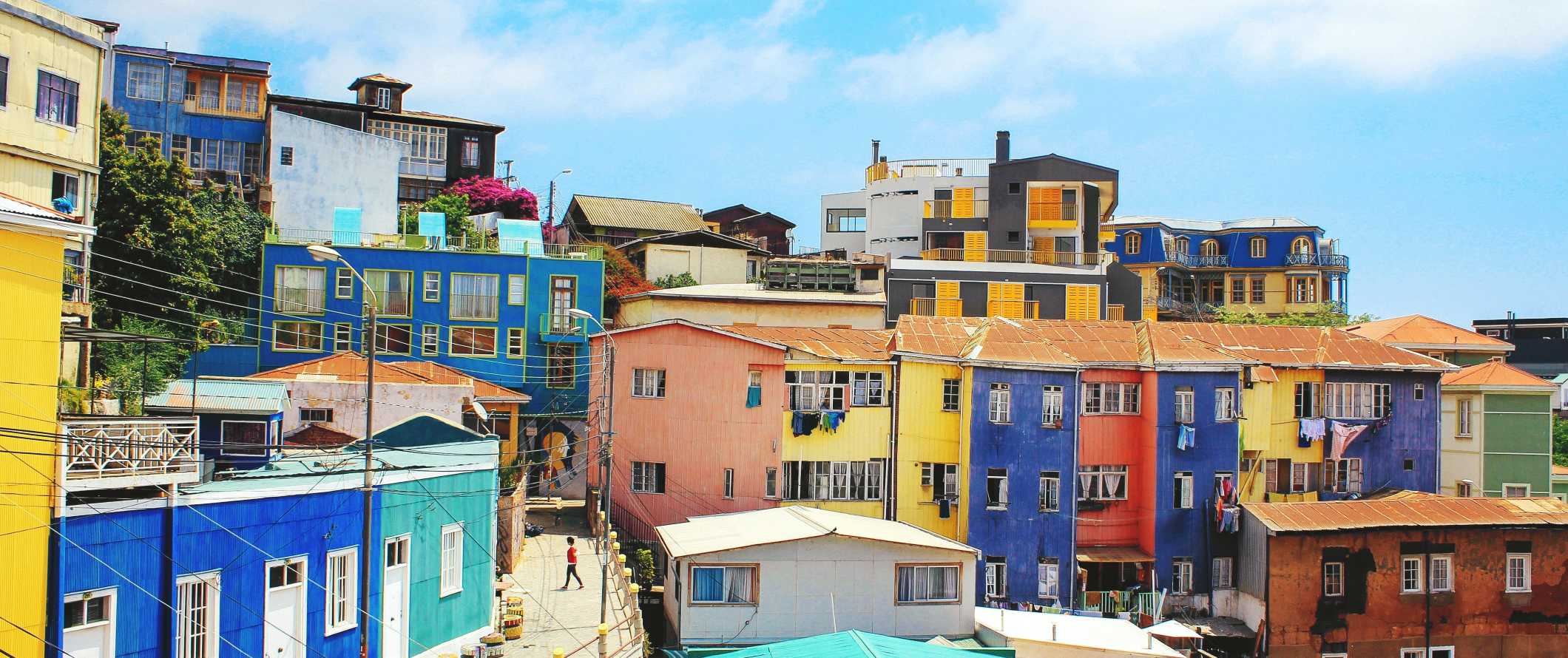
Accommodation
- Hostel dorms – 9,800 CLP per night
- Hostel private rooms – 22,000-30,000 CLP per night
- Budget hotels – 25,000-55,000 CLP per night
- Airbnb private rooms – 16,000 CLP per night
- Airbnb apartments – 45,000-60,000 CLP per night
- Campsite – 5,300-35,000 CLP per night
- Set-menu lunch – 7,000 CLP
- Sit-down restaurants – 35,000 CLP
- Fast food (think McDonald’s) – 6,000 CLP
- Beer – 3,000 CLP
- Cappuccino/latte – 2,300 CLP
- Bottled water – 850 CLP
- Groceries for a week – 25,000 CLP
Note: As everything must be shipped south, food prices in Patagonia are about 30% higher than elsewhere in the country.
Chile Suggested Budgets
How much does it cost to visit Chile? That depends on a few different factors, specifically, what you plan on doing while you’re here as well as your travel style.
Backpacker – 36,000 CLP Per Day
On a backpacking budget, you can stay in a hostel dorm, cook your own meals, use public transportation to get around, and visit a few museums. If you plan on drinking, you’ll need to add 5,000-8,000 CLP per day.
Midrange – 105,000 CLP Per Day
On a mid-range budget, you can stay in a private Airbnb room, take buses between destinations, eat out at street stalls and cheap restaurants, take the occasional taxi, enjoy some drinks, and do some paid excursions like guided hikes and wine tours.
Upscale – 205,000 CLP Per Day
On this budget, you can stay in a hotel, rent a car to get around, do more guided tours, drink as much as you want, and eat out at nice restaurants. This is just the ground floor for luxury, though. The sky is the limit!
Chile Travel Guide: Money-Saving Tips
Chile can be an expensive place to visit, especially if you’re doing a lot of tours and activities. The size of the country also means you can end up spending a lot on transportation. Here are some tips to help you save during your visit:
Bring a water bottle – LifeStraw is a reusable water bottle with a built-in filter that you can use instead of buying single-use plastic bottles. It removes bacteria, parasites, micro plastics, and other contaminants so it’s perfect for cities as well as if you’re out hiking in nature.
Buy wine at the supermarkets – Surprisingly, buying wine from vineyards can be more expensive than in the supermarkets. Buy from the supermarkets if you’re on a tight budget.
Take the bus – Bus service is inexpensive and efficient here. Night buses are comfortable and a good way to save on a night’s accommodation (they often have lie flat beds).
Buy food from La Vega Market – La Vega Market in Santiago sells everything you could possibly need and all sorts of local ingredients from Chile and Peru. Shop here for your veggies, fruits, and to get an authentic experience.
Eat at the local fish markets – In the coastal cities, the local fish markets are usually the best place for a seafood meal. Though the restaurants look cheap and thrown together, they’re delicious!
Shop around – Haggling is not common and vendors stick to their guns even when called out for price discrimination. So, if you’re quoted an inflated price for being a tourist it’s best to just move around and find alternatives where the prices are already set and visible. Otherwise, you’ll just be wasting your time and energy.
Ride in a micro or colectivo – Regular buses are for intercity transportation. “Micros” are intracity, and “colectivos” are taxis that drive a specific route once they get four people in the car, and charge a very low rate. If you want to go somewhere, chances are there’s a micro or colectivo that can get you close — just ask a local and they’ll know where to point you.
Stay with a local – Chile doesn’t have a huge Couchsurfing community, but you can still give it a shot and try to find a host (and get a local friend and a free place to stay). Just be sure to send your requests early!
Take a free walking tour – There are some great options available when it comes to free walking tours in Santiago, such as Tours 4 Tips or Free Tour Santiago . If you want to explore the city while learning about its history, architecture, and people then be sure to take a free tour. Just remember to tip at the end!
Stay at a Hola Hostel – Hola Hostels is a network of hostels predominantly in South and Central America. They offer 10% off to their members, as well as other local discounts for food and activities. Joining is free, and their hostels are also committed to environmentally sustainable practices.
Travel in the shoulder season – Prices in the country are cheaper outside of the high season (which is November-March). This includes admission to parks like Torres del Paine, which charge double during the busy summer months. Beat the crowds and save some money by skipping the high season.
How to Get Around in Chile
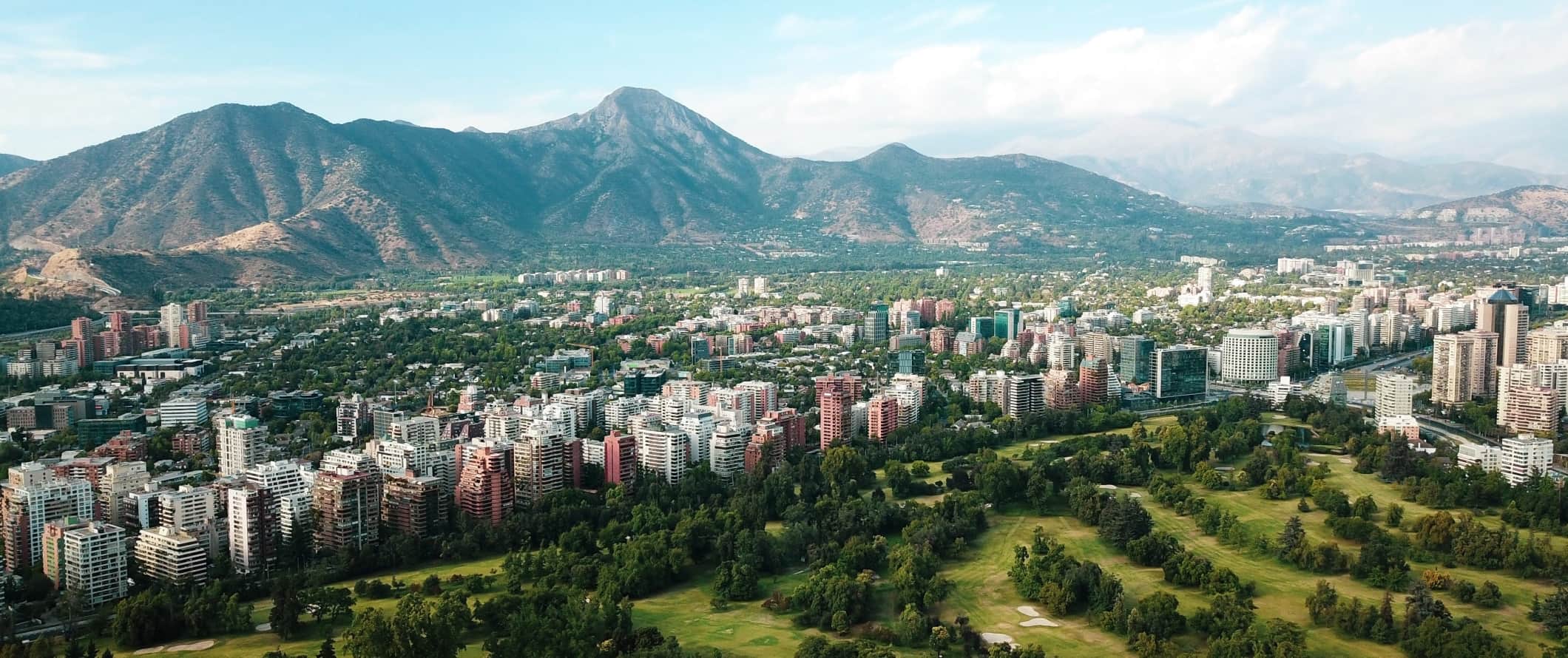
Public transportation – Public transportation, especially in Santiago, is reliable and affordable. In Santiago, you need to purchase a refillable bus pass (BIP Card) for your journeys as individual tickets are no longer available. The card costs around 1,550 CLP with the average ride costing around 700 CLP (prices vary depending on the time of day). BIP cards need a minimum initial credit of 1,000 CLP. You have to pay for your card and top-ups in cash; non-Chilean credit cards are not accepted.
Bus – For intercity travel, buses are the cheapest way to get around — and they are nice too! Reclining seats are common and many even recline almost all the way down. Additionally, some night buses even have a curtain between the seats so you can have a little privacy from your neighbor. The best companies to use are Turbus and Pullman.
Expect to pay at least 38,000 CLP per person from Santiago to Antofagasta. From Santiago to Valparaiso, bus tickets cost around 6,000–10,000 CLP each way. For something like the cross-country journey from Santiago to Punta Arenas, expect to pay at least 60,000 CLP for the 40-hour bus ride (this is an incredibly long distance so you have to change at Osorno or choose flying).
Train – Traveling by train in Chile is virtually non-existent. Much of the tracks have been left to decay beyond repair outside the central region of the country. Trains link Santiago with Curico, Talca, Linares, and Chillan with air-conditioned cars but that’s the extent of Chile’s train infrastructure. You can visit trencentral.cl for the available routes and prices.
Flying – Flying around the country is surprisingly affordable. Expect to pay around 28,000-35,000 CLP for the two-hour flight from Santiago to Antofagasta. Prices are similar for trips from Santiago to:
- La Serena (one hour)
- Calama (two hours)
- Arica (two hours forty-five minutes)
- Concepcion (one hour)
- Puerto Montt (one hour forty minutes)
For a flight between Santiago and Puerto Natales, expect to pay around 40,000-55,000 CLP. Round-trip flights from Santiago to the remote Easter Island cost around 240,000-300,000 CLP.
Car rental – Driving in Chile is much easier (and safer) than driving in other South American countries. Many of the highways are well-maintained thanks to their liberal use of toll roads. While driving in Santiago can be a little chaotic, once you get out of the city things generally become much easier. Expect to pay around 178,000 CLP for a one-week rental. Drivers need to be at least 21 years old.
For the best car rental prices, use Discover Cars .
Hitchhiking – Hitchhiking in Chile is generally quite safe for foreigners. Avoid hitchhiking on rural roads, where there is much less traffic. If you do plan on hitchhiking regularly, bring a tent with you in case you don’t find a ride. It’s relatively easy to wild camp in Chile, and often you can ask at gas stations or police stations to pitch behind their building. Check Hitchwiki for more information.
When to Go to Chile
Since Chile is in the southern hemisphere, the summer months are December, January, and February. With landscapes ranging from desert to tundra, the weather and temperatures can vary tremendously here. Expect daily highs around 28-30°C (82-86°F) in Santiago, while the highs in Torres del Paine are closer to 13°C (55°F).
Winter is not a particularly great time to visit as the temperatures can drop below freezing, with snowfall common in certain regions. Daily lows reach -15 °C (5 F), making it rather unpleasant to be out and about during the day. Unsurprisingly, you can see why most travelers visit during the summer.
Fortunately, the shoulder season is also a fantastic time to visit Chile as you’ll be able to beat the crowds and save yourself some money. It’s an especially good time to visit if you plan on visiting Torres del Paine as there will be fewer hikers here and the park admission will be much cheaper. November and March are usually included in the high season, so aim for late October or early April. The weather won’t be perfect, but it’s a good compromise for travelers looking to dodge the crowds.
Chile Travel Guide: The Best Booking Resources
These are my favorite companies to use when I travel. They consistently have the best deals, offer world-class customer service and great value, and overall, are better than their competitors. They are the companies I use the most and are always the starting point in my search for travel deals.
- Skyscanner – Skyscanner is my favorite flight search engine. They search small websites and budget airlines that larger search sites tend to miss. They are hands down the number one place to start.
- Hostelworld – This is the best hostel accommodation site out there with the largest inventory, best search interface, and widest availability.
- Booking.com – The best all around booking site that constantly provides the cheapest and lowest rates. They have the widest selection of budget accommodation. In all my tests, they’ve always had the cheapest rates out of all the booking websites.
- Get Your Guide – Get Your Guide is a huge online marketplace for tours and excursions. They have tons of tour options available in cities all around the world, including everything from cooking classes, walking tours, street art lessons, and more!
- SafetyWing – Safety Wing offers convenient and affordable plans tailored to digital nomads and long-term travelers. They have cheap monthly plans, great customer service, and an easy-to-use claims process that makes it perfect for those on the road.
- LifeStraw – My go-to company for reusable water bottles with built-in filters so you can ensure your drinking water is always clean and safe.
- Unbound Merino – They make lightweight, durable, easy-to-clean travel clothing.
- Top Travel Credit Cards – Points are the best way to cut down travel expenses. Here’s my favorite point earning credit cards so you can get free travel!
Chile Travel Guide: Related Articles
Want more tips for your trip? Check out all the articles I’ve written on Chile travel and continue planning your trip:
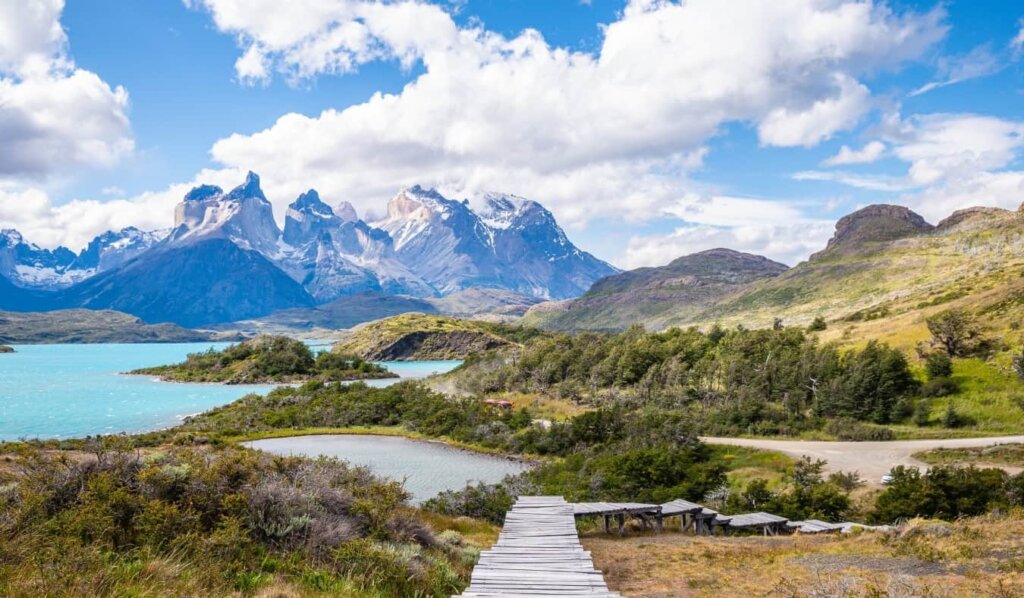
Is Chile Safe to Visit?

The 10 Best Cities to Be a Digital Nomad
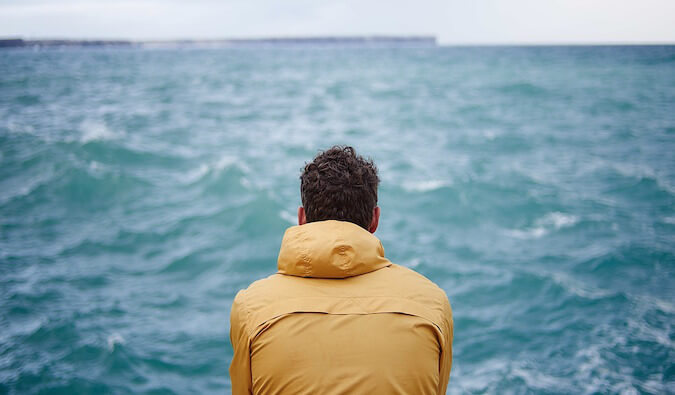
My (Non-Existent) South American Itinerary (and My Anxiety)
Get your free travel starter kit.
Enter your email and get planning cheatsheets including a step by step checklist, packing list, tips cheat sheet, and more so you can plan like a pro!

- Where To Stay
- Transportation
- Booking Resources
- Related Blogs
Exploring CasinoOnlineRuleta.com – Your Ultimate Guide to…
Iniciarse en el trading: herramientas esenciales para…, how to maximize your online casino rewards…, chile grapples with online gambling regulations, goleadores históricos de la copa américa: de…, unwind in style: chile’s top entertainment getaways, how to practice sustainable travel in chile, winwin app elevates mobile betting in bangladesh, seguridad en internet: claves para identificar sitios…, what to visit in santiago if you….

The renaissance of the train in Chile

Chile’s railroads are experiencing a boom thanks to new public investment, alliances with the private sector, and new approaches to commuter trains. The railway system, that had its golden age in the early twentieth century, and was neglected for decades, now recovers its importance in a new age.
2018 was a great year for the Empresa de los Ferrocarriles del Estado (EFE), the state-run national railway company. According to the company, 47 million passengers were transported by train last year, the highest figure since the creation of EFE more than 135 years ago.
Projections show this number will continue to rise. It is expected that by 2026, the current passenger transport figures will triple, and by 2022 cargo transport will increase by 60% in relation to 2017 .
“These numbers show that the development strategy we are promoting is the correct one: commuter trains, more cargo and less deficits . The figures guarantee that the railway is unbeatable over short distances”, EFE president Pedro Pablo Errázuriz told La Hora news outlet .
To reach this prosperous point, the Chilean railroad had to pass a bumpy road: from a high during the early twentieth century to an almost collapse by the 1980s and a recovery at the beginning of the 2000s.
Delivery Services Swarm Latin American Metro Areas
The origins
A symbol of progress, the railroad was one of the great yearnings of Chile during the nineteenth century, and it became one of Chile’s largest engineering feats , promoting the development of towns and cities in large parts of the country.
The first train line was built in the mid-nineteenth century connecting the port of Caldera and the city of Copiapó (in the north) and the mining companies in the area.
In 1884, the Company of the Railroads of the State of Chile was created. The public network was divided into three sections: Valparaíso-Santiago, Santiago-Talca, and Talca to the south. That same year, the construction of the railway bridge, the Malleco Viaduct , the highest railroad bridge in the world at that time , was inaugurated by President José Manuel Balmaceda.
Golden age and neoliberal decline
The high point for Chilean trains was reached on November 23, 1923, when the first longitudinal train that linked the country from Iquique (north) to Puerto Montt (south) departed, marking a milestone, not just for the development of the railroad in Chile , but for the country’s history, because the state was for the first time managing to unite most of the cities and towns of the country, and parts of Peru and Bolivia by Arica, integrating them into the nation and its social and economic development.
This golden age of the train, when the railroad had an almost monopoly in the transportation area, lasted until the 1950s.
Then, beginning in the 1970s a progressive crisis began due to a lack of investment in the maintenance and replacement of equipment.
At the same time, the railway started facing stiff competition from other forms of transportation, particularly buses, cars, and airplanes, due in part to privatizations and higher investments that had been made in those other sectors.
By the 1980s, and with the arrival of the Chilean neoliberal era imposed by the military dictatorship, the train, like many of the state-run public services and industries, was almost completely left to the private sector and the market logic of only running services that are economically self-sustaining.
That prompted the closing of the train lines from Santiago to the north (which meant the closure of the Mapocho Station ), Santiago to Valparaíso, and many other routes around the country.
The train renaissance
After decades of neglect, an authentic train “renaissance” began during the Ricardo Lagos administration (2000-2006) with the so-called “ Triennial Plan ,” embodying the recovery of the role of the state in the economy promoted by the socialist governments at the beginning of this century.
The project provided a strong boost from the state to the Chilean railway system that was intended both to revive rail service from Santiago to Puerto Montt, as well as modernize the Valparaíso Regional Metro train.
In more recent years, a new modality in passenger rail transport, called “ commuter trains ,” has also been developed. Examples include the Santiago-Nos and Santiago-Rancagua lines (both center), which have resulted in an increase in the frequency of services and a reduction in travel times , improving the quality of life of those who use the trains. Such lines best represent the new approach of the state-run company: short distances.
In 13 minutes with cable car from Providencia to Huechuraba
New projects on the horizon
Currently, and following their strategy of building short-line trains, EFE hopes to develop and enhance other projects, such as the construction of the Quillota-La Calera line (Valparaíso region), the Santiago-Melipilla line (center), the Santiago-Til Til line (center), the new railway bridge over the Biobio river (south), and new trains for the Biobio and Araucanía regions.
EFE has also been open to alliances with the private sector, a major detour from the logic of the twentieth century that trains operate as a purely public service. With seven tourist train lines operating in different parts of Chile, each designed to take advantage of the heritage value of the railroad to improve the areas around it, EFE, with private financial support, has developed an entirely new sub-sector of the national railway industry.
Private investment can also be seen in new passenger train line projects. Investors, in consultation with EFE, have started building a train line that could reduce the commute between Santiago and Valparaíso to just 45 minutes—less than half the time it usually takes by car or bus.
A renewed, worldwide trend
As the Chilean train industry develops with the support of the public and private sectors , the economy of the country could see a positive push, one that could help grow several economic sectors, including construction, transportation, tourism, and international trade—especially helpful in these global, automated times.
Examples of countries developing passenger and freight trains to support their economic growth are easy to find around the world.
One of the most ambitious public infrastructure project in the United States is the bullet train from the state of California . The plan is to connect San Francisco with Los Angeles and promises trains faster than any in Europe or Japan, and dramatically change the mobilization of the state’s population. The future railroad system has a projected cost of up to US$100 billion and it would directly help create thousands of skilled labor jobs.
Across the Pacific, China has its own grandiose railway project : President Xi Jinping’s “ Route and Belt Initiative ,” a plan to connect two thirds of the world’s population and 70 countries through a network of land and sea links. So if these countries can realize such projects, Chile should be able to do the same, right?
At least 9 dead after traffic accident in Valdivia

Tomás (29) studied a degree in History and obtained his professional degree as a journalist, both at the Universidad Católica. He did his internship at the International section of El Mercurio and worked as a columnist at El Definido. Tómas is passionate about international news, meeting different cultures and trying to understand the world in which we live.
Maduro: “Piñera is a muppet of Pinochet”
Review: netflix releases episode on victor jara´s death, related posts, ministry of science and technology shaped: first minister elected, how snapchat is helping the chilean police to find back missing people, chile becomes the first country in latin-america to apply robotic surgery.
This website uses cookies to improve your experience. We'll assume you're ok with this, but you can opt-out if you wish. Accept Read More
14 things you need to know before you come to Chile

Sep 23, 2023 • 7 min read

Having a Chilean adventure is easier with some inside tips © Westend61 / Getty Images
I remember the day back in 2014 when I’d just settled into my new apartment in Santiago and a powerful earthquake rattled the walls. I leaped up from my couch and ran for the door, while all the Chileans in the room just sat still and laughed at me, confident in Chile’s strong building codes and unfazed by the regular tremors.
A few days later, I learned that even the simple act of buying an empanada (stuffed pastry) could involve navigating three separate lines. As those first weeks in Chile passed, my dinner hour moved from 7pm to 8pm, eventually landing where it stands today, at around 9pm in the evening.
Chile is, in many ways, an accessible and familiar destination for many travelers. Yet, there are customs, protocols and safety issues that you’ll want to keep in mind on your trip. From cheek-kissing to the local etiquette for tipping, here are some insider tips to help you make the most of your visit to Chile.

1. Learn some basic Spanish before arriving
Chileans have a reputation for being shyer than most other Latin Americans, and local people won’t typically talk to strangers unless asked a question. Learning a bit of basic Spanish can go a long way towards breaking down barriers and getting to know the locals when you visit.
It’s also a bit of a necessity – outside of the major hotels and the business district in Santiago, you’re unlikely to find many English speakers when traveling around the country, particularly in rural areas. That said, Chileans will try their hardest to understand and help out as best they can, even if there's a language barrier.
2. Pack layers for cool evenings
It doesn’t matter if you’re staying by the coast, up in the Andes, down in Patagonia or out in the Atacama Desert , temperatures across Chile drop considerably at sundown, making layers a necessity at any time of the year. Even in the Central Valley and Santiago, a blazingly hot day can transform into a cool evening before you know it. Always pack an extra layer when going out for a full day.
3. Download WhatsApp for easy communications
It’s not uncommon to have to wait several days for a response if you send an email to a business in Chile. If you want to book a tour or a hotel or restaurant reservation, communicating via WhatsApp is always the best way to go; you may find that you get a response in just minutes.

4. Be prepared to eat late
Chileans are not big fans of early mornings, and most locals consume lunch between 1:30pm and 3:30pm. Dinner won’t begin until after 8pm, and can be as late as 10pm. If you can’t stand the thought of eating dinner that late, try Chile’s “fourth meal” – an afternoon tea, typically consisting of bread, cheese, meat, eggs, mashed avocado and something sweet. It's known locally as la once (pronounced "on-say").
5. Embrace the sobremesa
When dining out with Chileans, it’s considered rude to leave straight after finishing your meal. Instead, it’s common to linger over the table chatting, perhaps while drinking a bajativo (digestif) such as Bitter Araucano to wash down the food.
Waiters at restaurants are well used to this habit and will never try to rush you out after your meal. If you’re dining in someone’s home, even getting up to help clear the table of dishes immediately after a meal could be considered impolite. Stick around and enjoy the conversation; these long, lazy meals are one of the best parts of Chilean culture.
6. Expect to queue
Why stand in line once when you can do it several times? In Chile, it’s not uncommon to place an order in one queue, pay in another and collect your order in a third. At a supermarket, you will be expected to queue up to weigh your bread, fruit and vegetables in separate lines before taking your items to the checkout to pay.

7. Learn to pay ‘sin cuotas’ but ‘con propina’
Credit cards are widely accepted across Chile thanks, in part, to a system of paying in cuotas (installments) for just about anything. Cashiers will always ask if you want to pay in cuotas , but when using a foreign bank card, you should always say no – " sin cuotas, por favor ."
At restaurants, waiters will ask if you would like to include a standard 10% tip, which is generally expected regardless of the quality of the service. Unless something went terribly wrong, it’s polite to say con propina – ‘with gratuity’ – when you request the bill.
8. Keep small bills handy
If paying for items in cash, always keep small bills to hand; many vendors will not be able to break a 20,000 peso note. Get into the habit of breaking large denomination bills into smaller change when you can.
9. Keep your voice down
Chileans are, on the whole, quiet and respectful people who prefer to avoid sticking out in a crowd. Loud-speaking tourists will immediately call attention to themselves, and often in a negative way. Speaking loudly in a foreign language on the streets of somewhere like downtown Santiago can also be a good way to alert pickpockets of a potential target!
10. Learn how to greet Chileans
As with many other Latin American peoples, Chileans are known for their warm greetings. It’s typical for women to greet other women, or men, with one kiss (right cheek to right cheek). Men will greet women the same way, and offer a handshake to fellow men – perhaps followed by a hug if you’ve become close.
Goodbyes are similarly enthusiastic. It’s not uncommon for someone who enters a social setting to greet everyone individually and then say goodbye to everyone individually when they leave.

11. Check for protests (and avoid them)
Protests are frequent in Chilean cities and while these are typically peaceful, they can shut down roads and public transport. Visitors should steer clear, as demonstrations can turn violent with little warning. In Santiago, water cannons and tear gas are often used to disperse crowds, particularly on dates commemorating politically charged historical events such as March 29, September 11 and October 18.
12. Know which areas of Chile to avoid
Chile is one of the safest countries in the Americas, according to the Global Peace Index . There is, however, one area in the southern part of central Chile that you may want to avoid due to an ongoing conflict between Indigenous Mapuche land-rights activists and the Chilean state.
While forestry corporations and landowners are the main targets, the dispute over land rights can close roads and become violent at times. The area to avoid lies on the border of the Biobío and Araucanía regions, roughly between Lebu and Temuco, following the coastal range. This said, flying into Temuco to visit popular Andean resort destinations such as Pucón or Malalcahuello is usually perfectly fine.
13. Know where to drink tap water
A good rule of thumb in Chile is that the water is perfectly safe to drink from Santiago south. In fact, in Patagonia , it’s downright delicious, and used to make some excellent craft beers. Heading north into the Atacama Desert, it’s best to avoid the tap water, except in large cities such as La Serena and Antofagasta.
14. Don’t be paranoid about earthquakes
Chile is one of the most seismically active countries on earth. Indeed, the country was the site of the strongest tremor ever recorded – the 1960 Valdivia Earthquake, which registered 9.5 on the moment magnitude scale. Following the devastation of that event, Chile now has some of the planet’s strictest building codes and is better prepared for dealing with seismic events than just about anywhere else on the planet.
Most Chileans won’t even bat an eyelid unless a quake approaches 7.0 or above, and the most recent sizable earthquakes in 2014 and 2015 – with respective magnitudes of 8.2 and 8.3 – saw just 15 fatalities. You can rest assured that coastal areas will have well-marked tsunami evacuation routes, and that buildings have been created with quakes in mind.
Explore related stories

Aug 23, 2024 • 7 min read
There’s nothing like hitting the road in an RV or camper van – these are the best destinations around the world for an RV road trip.

Jul 31, 2024 • 4 min read

Jul 30, 2024 • 7 min read

Dec 27, 2023 • 8 min read

Dec 1, 2023 • 6 min read

Nov 6, 2023 • 8 min read

Sep 26, 2023 • 7 min read

Sep 21, 2023 • 7 min read

Sep 17, 2023 • 7 min read
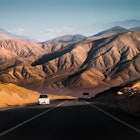
Aug 23, 2023 • 4 min read

IMAGES
COMMENTS
The rail network in Chile is operated by the state owned company Empresa de los Ferrocarriles del Estado (EFE). ... Best Time To Travel To Chile. Chile is a year-round destination but depending on what kinds of activities you enjoy will determine a better time to visit than another. For the best savings, we recommend traveling in the shoulder ...
Chile Tours. In Chile, there are some excellent train routes for railfans. Ride the rails of Chile from Puerto Varas to the coast and mild climates of Santiago de Chile. Travel by rail to Temuco, Chillán, Talca, and Constitución. There is also a train from Calama in the north to Uyuni in Bolivia. The scenery of Chile's wine and agricultural ...
Trains in Chile are getting faster. New high-speed trains will reach speeds of up to 160 km/h on the Santiago-Chilian route, reducing travel time from 5 to 3 hours and 40 minutes. This is part of a project to modernize the country's rail infrastructure. The journey from Puerto to Limache takes 1:03 hours and from Central to Rancagua takes 1:10 ...
The train journey from Santiago to Chillán is part of our exclusive "Patagonian Rail & Cruise" tour, adding a touch of adventure and scenic beauty to your overall travel experience. As the train winds its way through the stunning landscapes, the journey between Santiago and Talca stands out as a captivating highlight of the tour.
Terra Sur Company offers differnt trips, in which you can enjoy the southern part of the country. Questions and reservations at www.efe.cl. Need help? Chile: +56 (2) 2570 8620 USA: +1-800-906-8056 Arg.: (11) 5219-4105 Brasil: (11) 3958-7071. Contact Information.
1. Metro de Santiago. 7,501. Rail Services • Public Transportation Systems. By 943polom. Modeled after the Paris metro, the main lines cut across the city center and into important districts. 2. Ferrocarril Arica Tacna. 88.
Chile - Rail Travel Chile is a long, narrow country in South America that spans over 4,000 km from north to south. The country has a well-developed railway network that connects major cities and regions, making it an efficient and convenient mode of transportation for both locals and tourists.
The longest - still existing - line runs from the capital Santiago de Chile to Chillán and is operated by TerraSur (formerly also known as EFE). The 400 km long route, includes 10 stops, takes 5 hours and is the fastest option heading South (compared to the bus). There are also some regional trains and metros, as well as special tourist ...
Day 1: Welcome to Santiago de Chile; Day 2: Discover Santiago; Day 3: Valparaiso by Train; ... Rail South America hosts world-class small-group tours utilizing rail travel whenever possible to discover the most renowned, unique, and unforgettable destinations in South America. Email. [email protected]. Call +593 981 312 458.
Mapping the path of Chile's last narrow-gauge branch line, the Ultimo Ramal, as it winds from Talca to the coastal town of Constitucion. How to Experience the Ultimo Ramal: Starting Point: Begin your journey in Talca, easily accessible by train from Santiago. Duration: The ride from Talca to Constitución takes approximately three hours.
An enlargeable relief map of Chile with major roads and rail lines depicted. Transport in Chile is mostly by road. The far south of the country is not directly connected to central Chile by road without travelling through Argentina, and water transport also plays a part there.The railways were historically important in Chile, but now play a relatively small part in the country's transport system.
The Trains for Chile plan continues to offer good news, this time about the Santiago-Chillán service. Yesterday, the first two trains that will renew the service were unloaded; they will transform it into the most modern in South America. The Santiago-Chillán section is currently the only regular long-distance service available (400 kilometers).
Estación Central - Train Station - Santiago. Prices range from CLP7,000 to CLP24,000 depending on the season, length of the journey and or which carriage you wish to travel. They basically follow two standards: Clase Preferent e (first class), where seats are considerably wider, more comfortable and far apart from one another, in addition ...
Chile Travel Guide. Last Updated: September 3, 2024. Chile is one of the most slender and longest countries in the world — it's just 150 miles across at its widest point! From the snow-capped volcanoes of Patagonia and blistering heights of the Andes to world-class wineries and Maoi sculptures of Easter Island, there are a lot of wonderful ...
Find information about destinations, routes and bus companies in Chile.
Once upon a time, train trips were a normal part of life in Chile. However, times (and budgets) have changed and these days Chileâ s rail network is not large, but it does have a small collection of scenic rail journeys with some unforgettable views. Chile's railways (except for a few industrial lines) are operated by the state owned company Empresa de los Ferrocarriles del Estado (EFE).
Save up to 40% on Chile Rail Tours 2024/2025 Chile Travel Guide. Home. South America. Chile. Rail Tours 2024/2025; Chile, a long and narrow country stretching along South America's western edge, is a land of stunning contrasts and natural beauty. Chile-guided tours offer an extraordinary opportunity to explore this diverse nation, from the arid ...
Rail Tours in Chile. 1. The Beer Trekking. Is the ONLY tour in which you will enjoy a bit of silence, nature, quiteness and beer all together. We are the pioneers …. 2. Full Day Private Walking Tour with a Native Guide & Public Transport. We want to make your visit to Valparaiso an unforgettable experience.
The train renaissance . After decades of neglect, an authentic train "renaissance" began during the Ricardo Lagos administration (2000-2006) with the so-called " Triennial Plan," embodying the recovery of the role of the state in the economy promoted by the socialist governments at the beginning of this century. The project provided a strong boost from the state to the Chilean railway ...
Roads become increasingly rugged as you approach Chile's southern tip and boats become an essential part of the travel mix, with the reward of spectacular scenery as you navigate between the islands. Whether you choose to explore by bus, boat, train or airplane, here is the lowdown on the best ways to navigate up, down and all around Chile.
FCAB railroad crossing the Carcote salar, northern Chile. La Red Norte (in english, 'Northern Network') ran from the extreme north of Chile, where the Arica-La Paz railway is located, to La Calera in the Valparaíso Province. [5] Its tracks were 1,000 mm (3 ft 3 + 3 ⁄ 8 in) metre gauge.However, several sections had originally 1,435 mm (4 ft 8 + 1 ⁄ 2 in) standard gauge including the ...
The Argentina and Chile Patagonia Railway Tour takes you mainly by railway, from Buenos Aires, along the fierce Atlantic coast to the animal paradise of the Peninsula Valdes. From there, travel west to the Patagonia Lakes Region and visit Puerto Varas, Puerto Montt, and Frutillar. Finish this Argentina and Chile travel package in Santiago, Chile.
Even in the Central Valley and Santiago, a blazingly hot day can transform into a cool evening before you know it. Always pack an extra layer when going out for a full day. 3. Download WhatsApp for easy communications. It's not uncommon to have to wait several days for a response if you send an email to a business in Chile.